Inbox and environment news:Issue 528
February 27 - March 5, 2022: Issue 528
Local Wildlife Rescuers And Carers State That Ongoing Heavy Rains Are Tough For Us But Can Be Tougher For Our Wildlife:
- Birds and possums can be washed out of trees, or the tree comes down, nests can disintegrate or hollows fill with water
- Ground dwelling animals can be flooded out of their burrows or hiding places and they need to seek higher ground
- They are at risk crossing roads as people can't see them and sudden braking causes accidents
- The food may disappear - insects, seeds and pollens are washed away, nectar is diluted and animals can be starving
- They are vulnerable in open areas to predators, including our pets
- They can't dry out and may get hypothermia or pneumonia
- Animals may seek shelter in your home or garage.
You can help by:
- Keeping your pets indoors
- Assessing for wounds or parasites
- Putting out towels or shelters like boxes to provide a place to hide
- Drive to conditions and call a rescue group if you see an animal hit (or do a pouch check or get to a vet if you can stop)
- If you are concerned take a photo and talk to a rescue group or wildlife carer
There are 2 rescue groups in the Northern Beaches:
Sydney Wildlife: 9413 4300
WIRES: 1300 094 737
Please be patient as there could be a few enquiries regarding the wildlife.
Generally Sydney Wildlife do not recommend offering food but it may help in some cases. Please ensure you know what they generally eat and any offerings will not make them sick. You can read more on feeding wildlife here
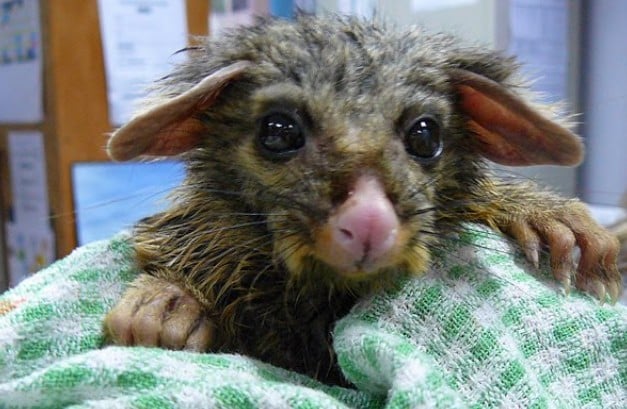
Information courtesy Ed Laginestra, Sydney Wildlife volunteer. Photo: from Esther Andrews.
Aviaries + Possum Release Sites Needed

Australia’s Eucalypt Of The Year Voting Is Open For The 5th Year!
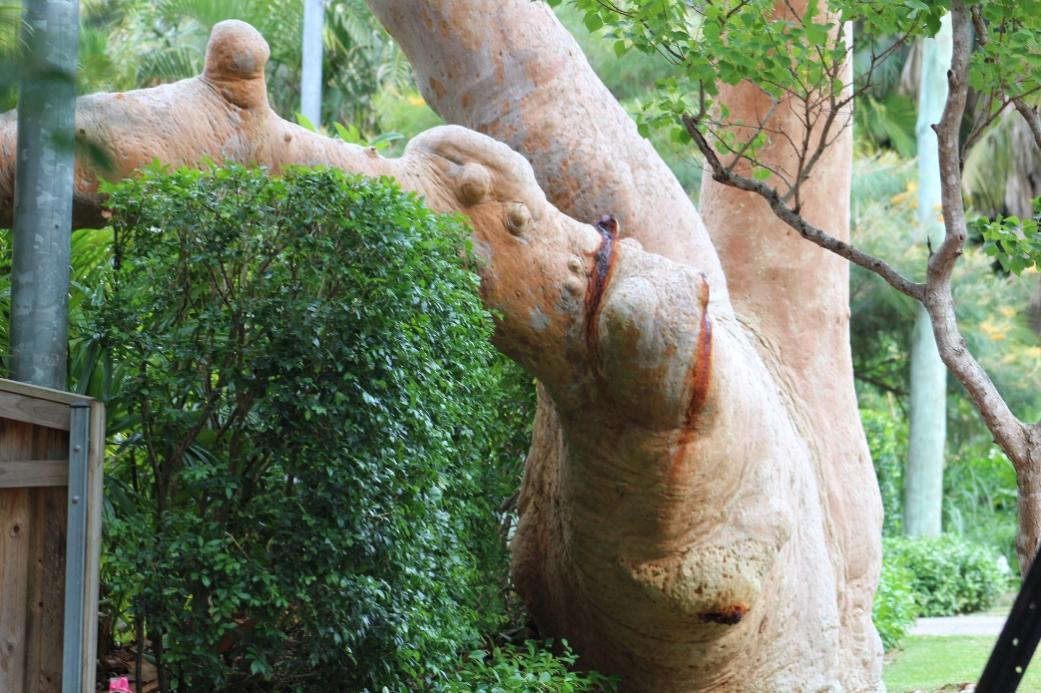
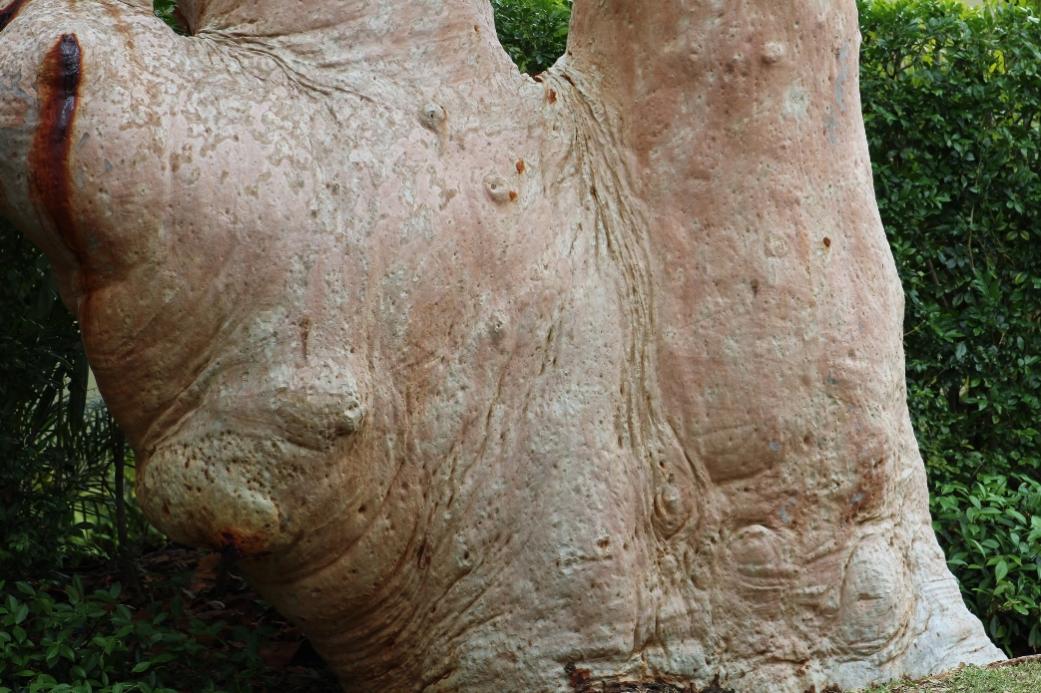
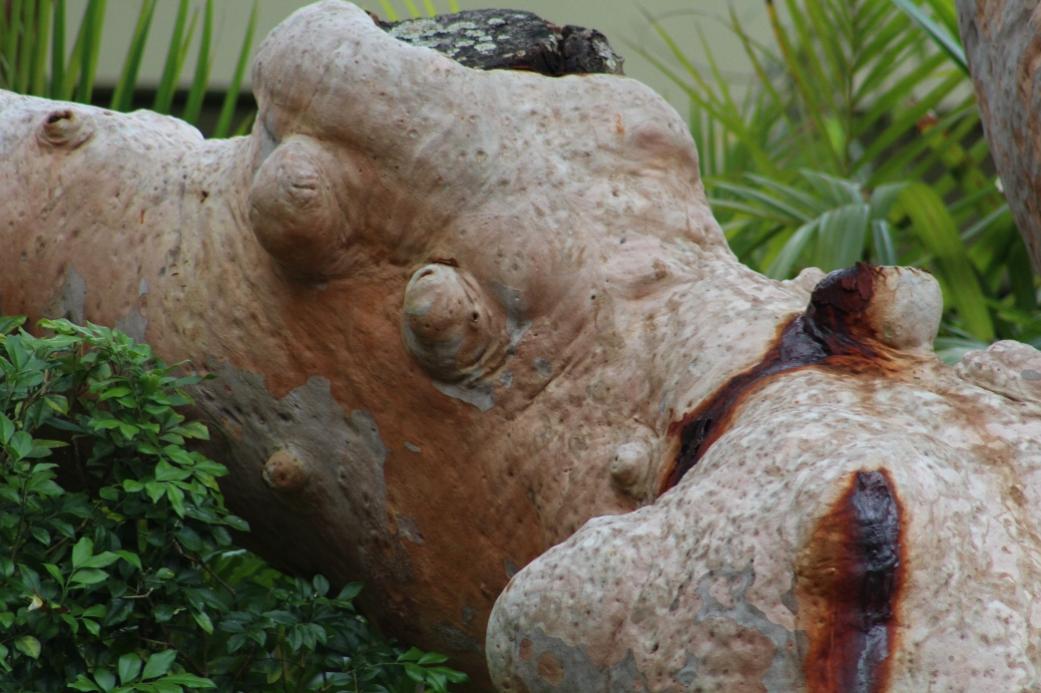
Clean Up Australia Day: Sunday March 6; 2022 - Local Sites List
- Committed to making a positive difference to the community and environment: activities should be inspiring, engaging and respectful of the local community.
- A volunteer movement: people cannot be charged to be involved in activities nor can activities be conducted for commercial or financial gain.
- Committed to the safety of volunteers: activities must be carried out in accordance with the local laws and regulations relevant to the activity.
- Uniting communities as part of a national campaign: participants must respect the presence and activities of other participants in their proximity.
- Welcoming to communities of all nations, cultures, races and faiths: participants and activities must respect political, cultural, and religious differences and beliefs
- Non-partisan: participants and activities must not imply endorsement of partisanship by Clean Up Australia.
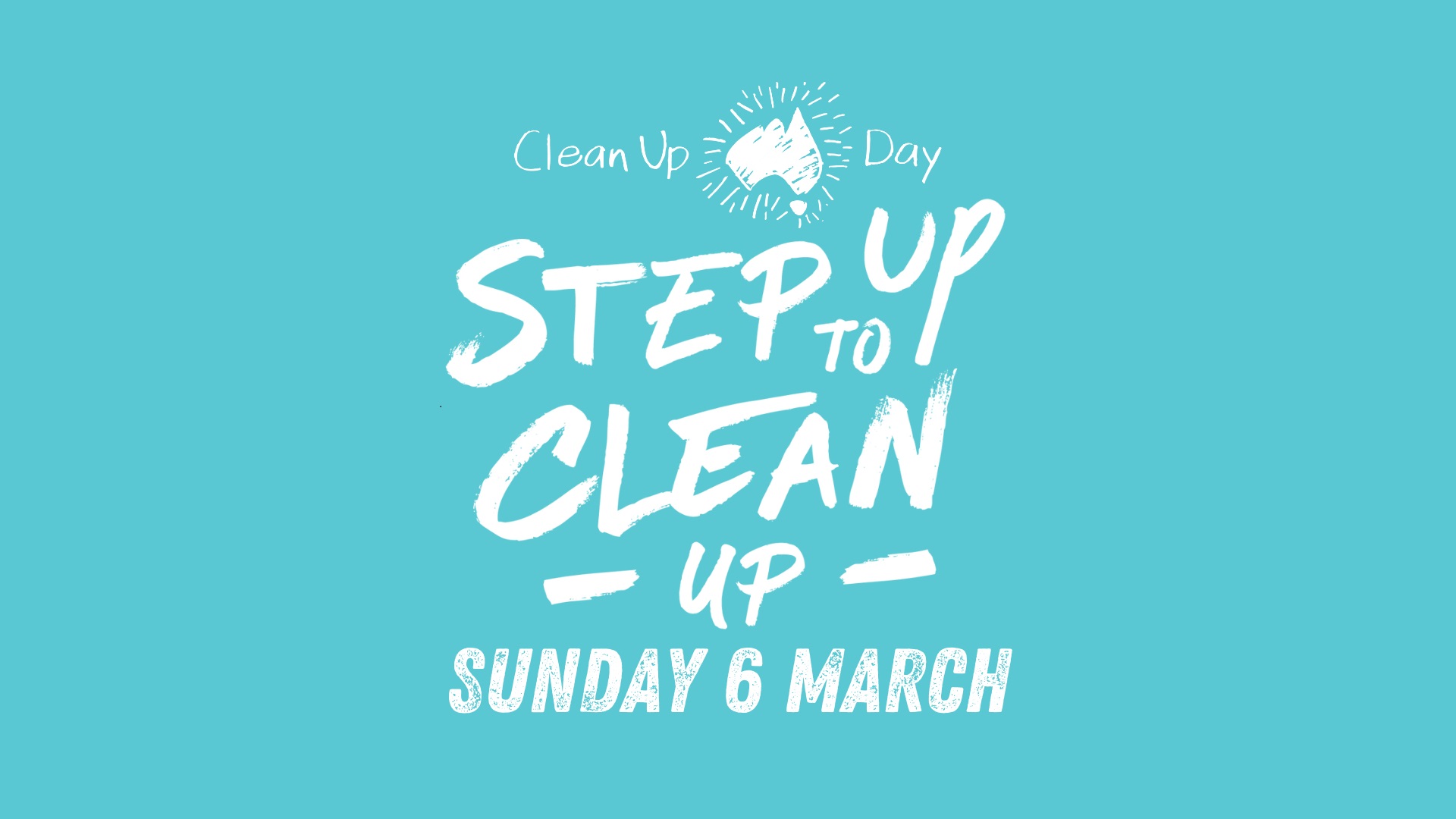
Asparagus Fern Flowering Now: Dispose Of This Weed To Stop The Spread
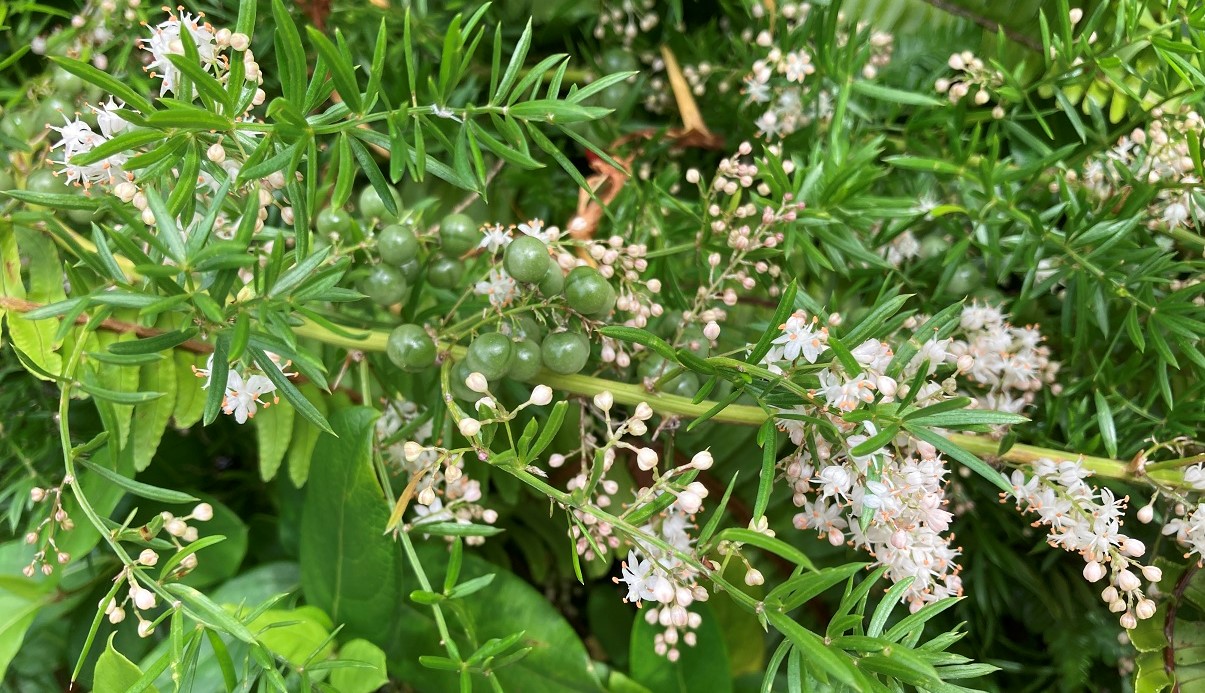
Friends Of Narrabeen Lagoon Catchment - Next Forum
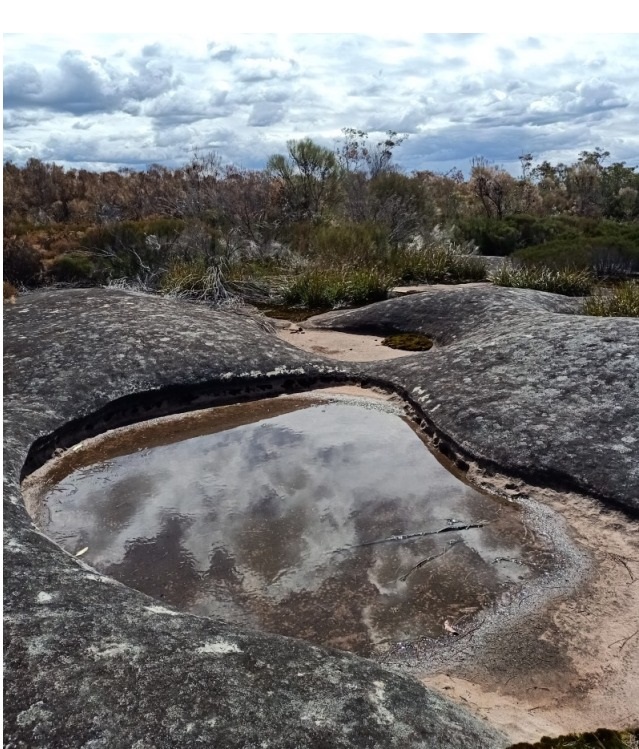
Powerhouse Brookvale - Australia's First Urban Renewable Energy Zone: Launch February 28
Powerhouse Brookvale Launch
Mon 28th Feb 2022, 5:00 Pm - 6:00 Pm AEDT
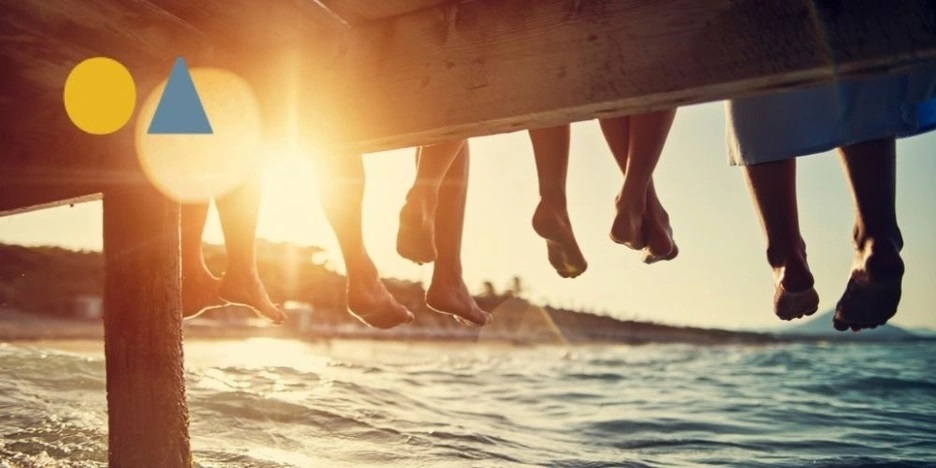
The Big Switch With Saul Griffith: Electrify Everything!
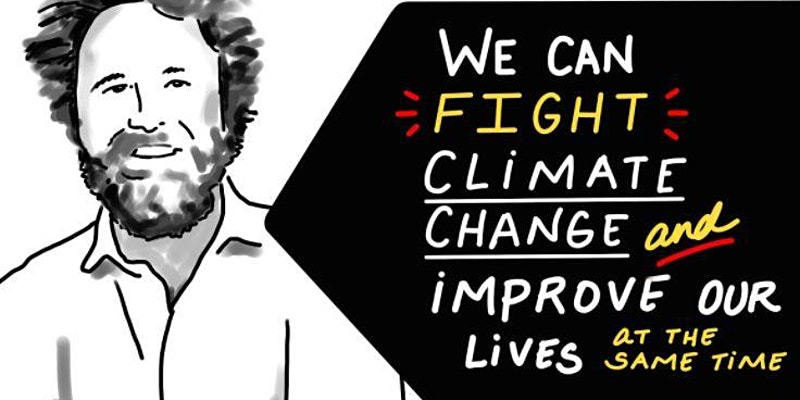 When: Wed, 23 March 2022; 6:30 PM – 8:00 PM
When: Wed, 23 March 2022; 6:30 PM – 8:00 PM Bushcare In Pittwater
Where we work Which day What time
Avalon
Angophora Reserve 3rd Sunday 8:30 - 11:30am
Avalon Dunes 1st Sunday 8:30 - 11:30am
Avalon Golf Course 2nd Wednesday 3 - 5:30pm
Careel Creek 4th Saturday 8:30 - 11:30am
Toongari Reserve 3rd Saturday 9 - 12noon (8 - 11am in summer)
Bangalley Headland 2nd Sunday 9 to 12noon
Bayview
Winnererremy Bay 4th Sunday 9 to 12noon
Bilgola
North Bilgola Beach 3rd Monday 9 - 12noon
Algona Reserve 1st Saturday 9 - 12noon
Plateau Park 1st Friday 8:30 - 11:30am
Church Point
Browns Bay Reserve 1st Tuesday 9 - 12noon
McCarrs Creek Reserve Contact Bushcare Officer To be confirmed
Clareville
Old Wharf Reserve 3rd Saturday 8 - 11am
Elanora
Kundibah Reserve 4th Sunday 8:30 - 11:30am
 Mona Vale
Mona Vale Mona Vale Beach Basin 1st Saturday 8 - 11am
Mona Vale Dunes 2nd Saturday +3rd Thursday 8:30 - 11:30am
Newport
Bungan Beach 4th Sunday 9 - 12noon
Crescent Reserve 3rd Sunday 9 - 12noon
North Newport Beach 4th Saturday 8:30 - 11:30am
Porter Reserve 2nd Saturday 8 - 11am
North Narrabeen
Irrawong Reserve 2nd Saturday 2 - 5pm
Palm Beach
North Palm Beach Dunes 3rd Saturday 9 - 12noon
Scotland Island
Catherine Park 2nd Sunday 10 - 12:30pm
Elizabeth Park 1st Saturday 9 - 12noon
Pathilda Reserve 3rd Saturday 9 - 12noon
Warriewood
Warriewood Wetlands 1st Sunday 8:30 - 11:30am
Whale Beach
Norma Park 1st Friday 9 - 12noon
Western Foreshores
Coopers Point, Elvina Bay 2nd Sunday 10 - 1pm
Rocky Point, Elvina Bay 1st Monday 9 - 12noon
Gardens And Environment Groups And Organisations In Pittwater
Sydney Wildlife Rescue: Helpers Needed
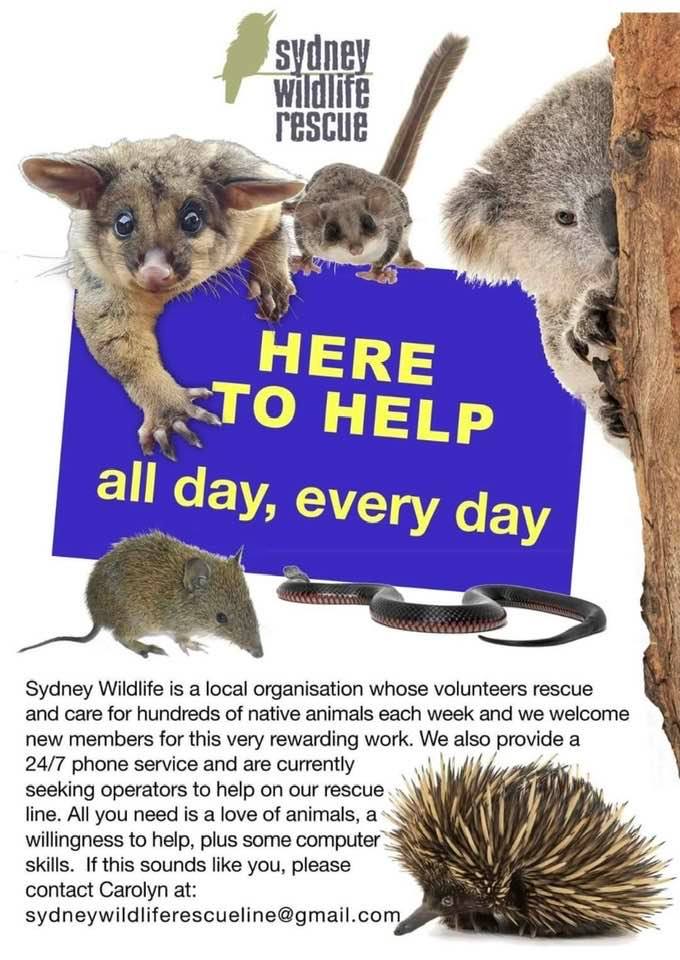
Why urban greening isn’t a panacea for extreme weather under climate change
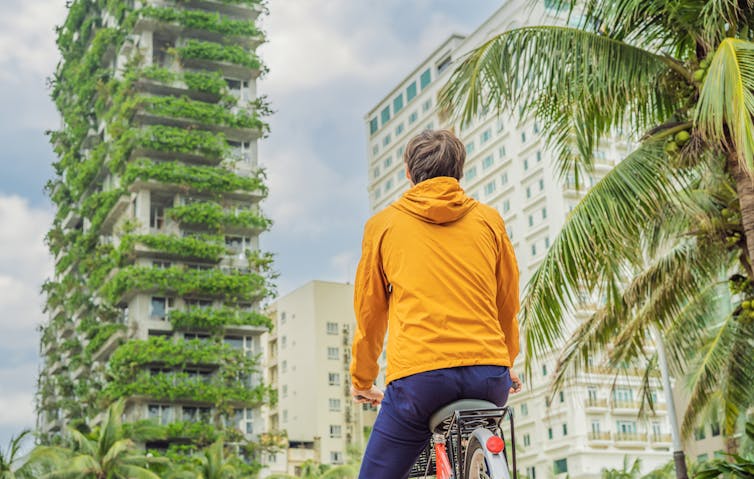
Urban greening is often touted as a way to tackle both heatwaves and floods in cities. This includes through green roofs, living walls, vegetated urban spaces, private and community gardens, habitat corridors, bushland and parks.
But our latest research shows that, for most cities worldwide, urban greening can either subdue floods or mitigate heat. It generally cannot do both in one city.
As the climate changes, cities around the world are enduring both heatwaves and floods more frequently. Perth, for example, sweltered through a record-breaking heatwave last month, with six days in a row over 40℃. A few months earlier, Perth recorded its wettest July in decades, with 18 straight days of rain.
Our findings ensure we can plan urban greening projects more effectively to suit cities. So let’s take a closer look at these findings, and the benefits Australia can derive from urban greening.
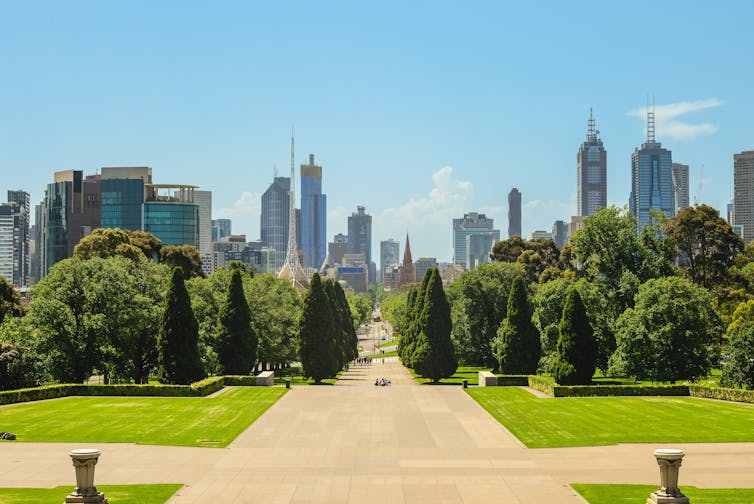
What We Found
Temperatures in cities are often several degrees higher than rural areas, due to the “urban heat island” effect, where the predominance of concrete and steel absorb and retain heat, and there is a lack of cooling by water evaporating from plants.
These same heat-intensifying features are also often responsible for flash flooding in cities, as sealed surfaces can’t act like a sponge to soak up and store rain, unlike the soil they’ve replaced.
To find out whether the benefits of urban greening on cooling and flood prevention hold true, we analysed global climate models and weather information from 175 cities around the world spanning 15 years of daily observations, from 2000 to 2015.
Our results, published in the journal Nature Communications, show the greatest cooling potential occurs where abundant rainwater is available for plants to transpire (release water vapour during photosynthesis). This is common for cities around the Equator and in much of northern Europe.
The cooling potential of urban greening varies with the seasons – it’s more effective if periods of higher rainfall coincide with summer.

In contrast, the greatest potential for water retention by soils, which is crucial for flood prevention, occurs in drier areas where there’s plenty of energy from sunshine, but rainfall is more limited. These areas are common in North Africa, Australia and the Middle East.
Such areas have higher average water retention in the long term, and its potential varies less from season to season. This is because large rainfall events that exceed the storage capacity of the soils and result in water runoff are less common.
What Do The Findings Mean For Australia?
While our findings suggest urban greening can’t reduce both flooding and heat in many, if not most, of the world’s cities, parts of southeast Australia are among the rare exceptions. This includes parts of Melbourne and Hobart.
Melbourne, for example, can endure urban heat island-induced temperature increases of 3℃. City greening initiatives are an important way to mitigate this heat.
On the other hand, Canberra, Adelaide, Perth and Brisbane are “water-limited”, which means urban greening is ineffective at reducing the urban heat island effect. However, because much of Australia has a relatively dry climate which is good for water retention, large-scale urban greening initiatives can help reduce flash flooding in these cities.
For example, Brisbane has lots of sunshine in summer, providing ample energy for evaporation, which often exceeds the amount of available summer rains.

Darwin is Australia’s only state capital that, according to our modelling, would not derive strong stormwater or cooling benefits from urban greening.
This is because Darwin is in an area that transitions between the arid Australian interior and the more humid tropical climates to the north. It doesn’t benefit from the high cooling or water retention performance that comes with either extreme.
Where To From Here?
While it seems we can’t assume urban greening can mitigate cooling and flooding at the same time, it’s still an excellent strategy to address either in many places.
Urban greening also has other positive benefits – it provides habitat, filters air and has demonstrable effects on people’s well-being.
However, there are important cost-benefits of these kinds of schemes to consider, both environmentally and economically.
Urban spaces are expensive, and many greening strategies require more complex engineering than traditional buildings. Also, the cooling benefits can only be significant in some areas if irrigation is used, and this is impossible to do sustainably in many parts of the world.
Policymakers worldwide can use our results as a first-pass guide for more local feasibility studies on urban greening. While it’s a crucial planning and climate change adaptation tool, urban greening has to be understood within specific local conditions – one size does not fit all.
Councils, governments, planners and developers need to be fully aware of the benefits and pitfalls before embarking on urban greening projects.![]()
Mark O. Cuthbert, Principal Research Fellow & Reader, Cardiff University; Denis O'Carroll, Professor & Managing Director, UNSW Water Research Laboratory, UNSW Sydney, and Gabriel C Rau, Assistant Professor, Institute of Applied Geosciences, Karlsruhe Institute of Technology
This article is republished from The Conversation under a Creative Commons license. Read the original article.
Energy poverty in the climate crisis: what Australia and the European Union can learn from each other

As the transition to clean energy unfolds, some fear the decarbonisation of the electricity sector will mean higher prices. And high prices can lead to energy poverty: when a household cannot afford the essential electricity services needed for a decent standard of living, such as heating.
Our new report, released today, compares approaches to energy affordability in the EU and Australia.
The EU is experiencing an energy price spike due to an increased demand as part of the post-COVID economic recovery and gas supply constraints from Russia. In Australia, wholesale electricity prices reached unprecedented levels in 2018, although they’ve since declined.
We found Australia can learn a lot from the EU about putting policies in place to alleviate energy poverty. We also show that under the right regulatory and market settings, electricity prices can be kept in check as the electricity sector decarbonises.
Apples And Oranges?
Why compare a large populous union of member states with Australia? The EU and Australia have important similarities when it comes to the energy sector, such as a vast grid that crosses jurisdictions and shared governance arrangements.
Both are experiencing an influx of renewable energy supply (although this has been more policy-driven in the EU than in Australia). And EU member states, like Australia’s states and territories, are ultimately responsible for energy regulation within their boundaries.
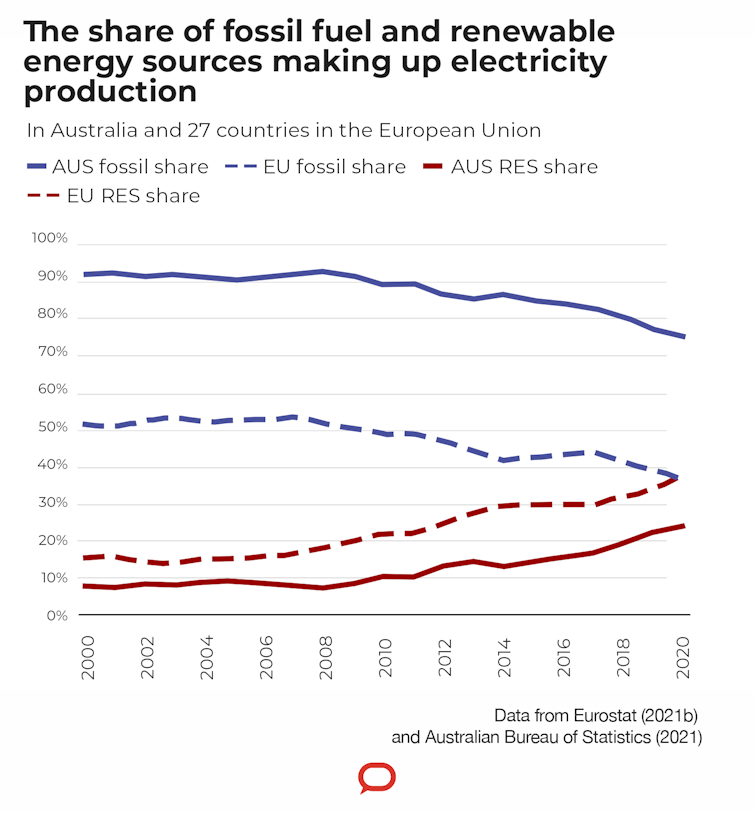
So, coordination and governance of energy involves gaining agreement across jurisdictions.
The EU takes a more co-ordinated and top-down regulatory approach on energy affordability than Australia. While there are lessons we can learn from the EU, there are no cut-and-paste solutions.
What’s Driving The Cost Of Electricity?
Well, it’s complex. The introduction of low-cost renewable supply over the last decade has moderated wholesale and retail electricity prices in both Europe and Australia. This is likely to continue in the short to mid-term.
Adding more renewable energy into the grid, however, requires upgrades to the poles and wires that carry the electricity – and this is costly. What’s more, low wholesale prices will encourage the early exit of ageing coal plants, which needs to be managed to avoid price shocks.
Australia can learn from the EU in this regard, where almost all member states – such as France and Germany – have announced plans to phase-out coal. They often set requirements and define closure dates for the plants.
This isn’t yet the norm in Australia, as most recently seen with Origin Energy’s surprise decision to bring forward the closure of Eraring – Australia’s largest coal plant – last week.
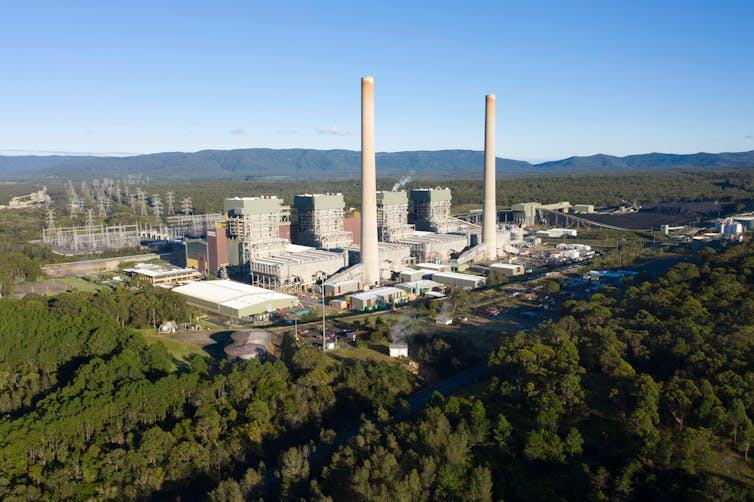
The Australian electricity system has more limited interconnection between states compared to most parts of the EU electricity market (although this is starting to change). This means shocks, such as early plant closures, are less easily absorbed in Australia.
Both the EU and Australia are grappling with how to fairly and efficiently distribute the cost of network upgrades across society. This includes in Germany, where electricity stakeholders are discussing how to distribute grid costs equally across the country and not overburden regions with higher renewable generation.
If the upgrades are financed by greater use of the grid, such as with more electric vehicles or heat pumps, this spreads the costs across a broader base.
Energy Poverty In Australia
Determining which households spend the most on energy tells us a lot about energy inequality and justice. There are big differences between Australia and Europe.
In Australia, as seen in the graph below, the average household spends a lot less on electricity and heat (2% of a household’s disposable income) than their EU counterpart (6%).
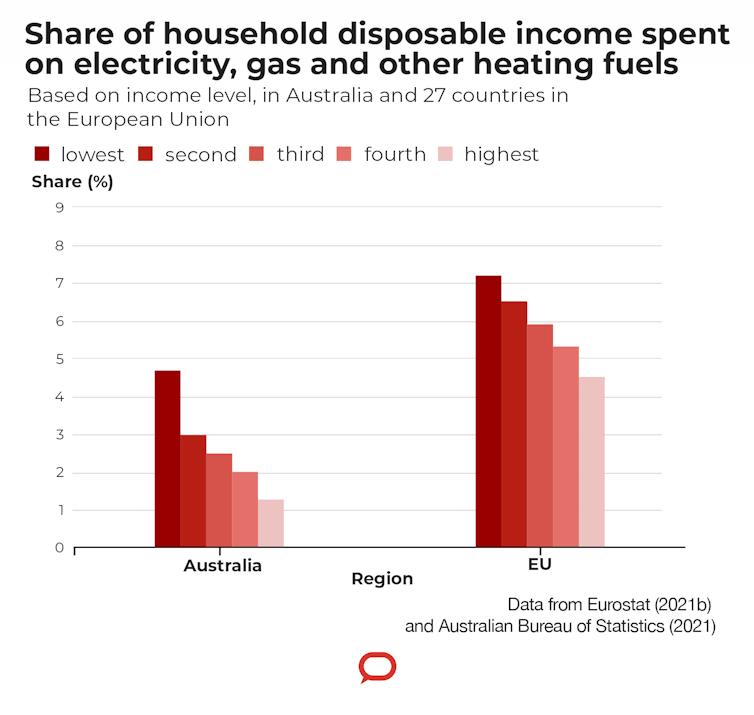
In both Australia and the EU, households in lower income groups spend a much larger fraction of their income on electricity and heat while consuming much less in absolute terms.
However, this dispersion is a lot more pronounced in Australia, where it has increased over the last ten years. This means low-income households are disproportionately affected by rising energy prices, and there needs to be a concerted effort to address this.
Policies To Address Energy Poverty
Alleviating energy poverty is a central policy issue within the EU, with the European Commission positioning it as a key aspect of a fair energy transition.
A range of regulations and institutions are dedicated to addressing it. The European Commission’s “renovation wave” policy, for example, is a large-scale renovation plan that focuses on low-income and social housing. This offers long-term support to vulnerable households on a scale not yet seen in Australia.
The EU also provides member states with clear guidance on how to define, measure and address energy poverty. Multiple and composite measures are used rather than a single metric. This includes absolute energy spending, owed utility bills, and self-reported inability to keep the home warm.
The EU has also resourced institutions, such as the Energy Poverty Observatory and the new Energy Poverty Advisory Hub, to better understand the nature of energy poverty.
Still, the translation of EU ambition to member states is uneven with, for example, Bulgaria performing much worse than Spain. The severity of the problem doesn’t necessarily translate into national-scale policy efforts.
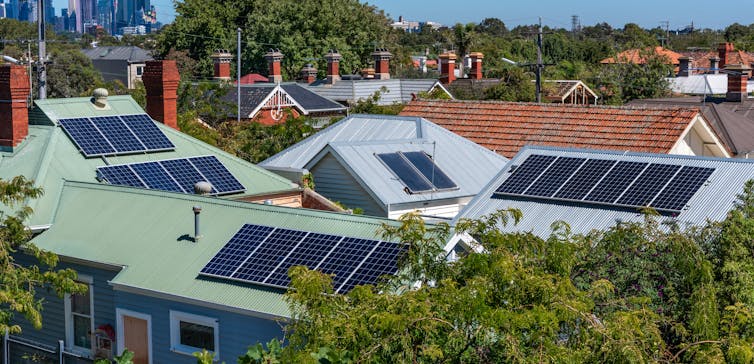
In Australia, there’s no national overarching framework for the energy transition that includes principles on equity and leaving no one behind.
Australia has the National Electricity Objectives that guide market planning. These, however, don’t reference equity or decarbonisation. Energy poverty remains a concept with no clear definition and, therefore, no clear objectives, targets or metrics for data collection, nor institutions to monitor and report on it.
Energy “hardship” or “stress” are more common terms, and Australia has a well-established consumer protection framework. This is focused more on relieving costs via concessions, retailer obligations and protections against possible electricity disconnections.
Whatever the language used, Australia can learn from Europe’s experience of developing a coherent definition, criteria for measurement, and independent institutions to report on energy hardship.
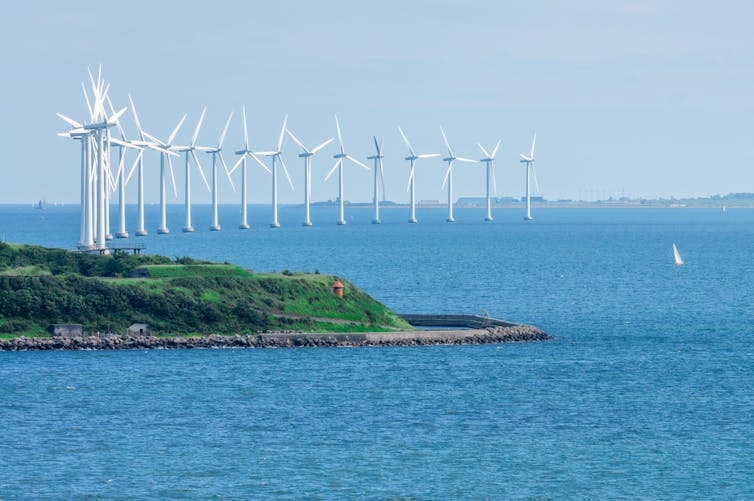
There are also lessons for Europe from Australia in the context of the rapid rollout of rooftop solar and smart meters.
In terms of this rapid roll out, Australia is getting on the front foot to tackle emerging consumer protection issues. This includes addressing inequitable cost allocations and barriers to market participation, and rule changes that address new responsibilities for providers in the changing energy landscape.
There are also good examples in Australia of industry-driven efforts towards cultural change on affordability. For example, the Energy Charter is a national CEO-led collaboration committed to customer-focused principles including energy affordability.
This can be effective and long lasting with buy-in from firms, big and small, and strong community engagement. ![]()
Sangeetha Chandrashekeran, Senior Research Fellow, Australian Research Council Centre of Excellence for Children and Families over the Life Course, The University of Melbourne; David Ritter, Senior Researcher, Oeko-Institut; Dylan McConnell, Research Fellow at the Australian German Climate and Energy College, The University of Melbourne; Johanna Cludius, Senior Researcher, Oeko-Institut, and Viktoria Noka, Research Assistant, Oeko-Institut
This article is republished from The Conversation under a Creative Commons license. Read the original article.
The battle for AGL heralds a new dawn for Australian electricity
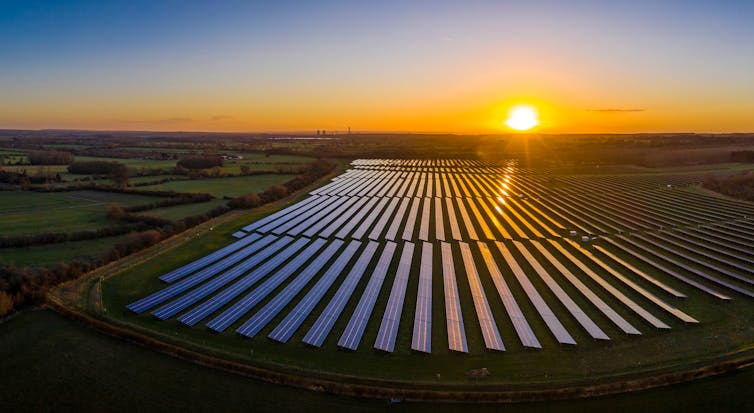
Two events in the past week mark a watershed for Australia’s electricity industry.
The first, on Thursday, was Origin Energy’s surprise announcement that it intends to close the mammoth Eraring power station in the NSW Hunter region in 2025, seven years earlier than previously advised.
Eraring is Australia’s largest coal-fired generator and supplies between a fifth and quarter of the electricity consumed in NSW.
The second, on Saturday, was a bid by a consortium led by Australian tech billionaire Mike Cannon-Brookes for AGL Energy.
AGL’s board has predictably knocked back the initial non-binding offer. But the transaction has some way to play out, and the share price has risen in expectation of a more attractive offer.
Serious negotiations will now begin. It would be surprising if they were drawn out.
After having pushed on the door for so long, those striving for rapid decarbonisation have suddenly found the door flung wide open.
What Cannon-Brookes Would Do
Cannon-Brookes has form when it comes to transforming power generation. In 2017 he challenged Tesla founder Elon Musk to build the world’s biggest battery in South Australia within 100 days and said he had “never been more happy to lose a bet” when it was built.
After spending as much as A$8 billion, his consortium would de-list AGL from the stock exchange and bring forward the planned closure of its coal-fired plants.
In partnership with the giant Canadian asset manager, Brookfield, Cannon-Brookes would spend as much as $20 billion on renewable power generation and storage.
AGL is Australia’s biggest greenhouse gas polluter, accounting for as much as 8% of Australia’s emissions. Cannon-Brookes says he would halve those emissions by 2030 and cut them to zero by 2035.
AGL is also a cultural icon. Originally called The Australian Gas Light Company and set up in 1837 by a NSW Act of Parliament before the advent of distributed electricity, it was the second company to list on what is now the Australian Securities Exchange.

One in every three Australian energy customers – about 4.5 million Australians – buy gas or electricity from AGL. It is by far Australia’s biggest energy supplier.
Those customers increasingly form its shareholder base. Australian superannuation funds are walking away on environmental concerns, while international institutional shareholders are edging away.
The bidders have indicated they will seek a way for existing shareholders to retain a share in what will become a privately owned company, if they wish to stay in.
AGL’s staff and unions will surely welcome new owners that promise a great deal of new investment to revitalise the company.
AGL Bet Big On Coal, Did Well – Then Lost
For much of the past decade, AGL has pursued a strategy of becoming Australia’s dominant fossil-fuel generator despite its early recognition – by Australian standards - of the reality of global warming.
It bought Victoria’s largest coal-fired generator in 2012, just as the Australian government introduced a price on carbon emissions. Two years later, it bought the Bayswater and Liddell coal generation plants from the NSW government, just as the Commonwealth government disbanded the carbon price.
At first, this coal strategy worked well for shareholders. The AGL share price more than doubled to reach an all-time peak shortly after the competing Hazelwood coal-fired power station closed in April 2017.
Since then, it has been all downhill. By the end of 2021 the AGL share price was less than one-fifth of its 2017 peak.
AGL’s coal generators, once so highly prized, have become an albatross.
Mid last year, it announced plans to split itself in two: a wholesale company that owned coal plants, which would transition to renewables, and a consumer-facing company that owned only renewables, storage and gas-fired peaking plants.

Earlier this month it brought forward the planned closure of its NSW Bayswater black coal-fired power plant, from 2035 to 2033, and brought forward the closure of its Victorian brown coal-fired Loy Yang A plant from 2048 to 2045.
With a share register of older Australians desperate for a stable dividend, AGL lacks the capital or ambition needed to complete the transition more quickly.
Taken together with Origin Energy’s intention to close its Eraring power station as soon as possible, Cannon-Brookes’ and Brookfield’s bid to buy AGL brings clarity, at last, to the closure of coal generation in Australia.
Although another four coal generators would remain in NSW and Victoria after the Eraring and AGL closures, they are smaller and have less strategic significance.
That would leave a substantial portfolio of coal generation in Queensland, owned by the Queensland government, which will come under political pressure to develop an exit strategy.
NSW And Victoria Will Have To Work Hard To Keep The Lights On
The AGL and Origin developments put the ball squarely in the court of the NSW and Victorian governments. It will be up to them to facilitate the rapid development of enough wind and solar generation and storage to ensure the lights stay on and electricity remains affordable.
This is a completely different dynamic to one that has dominated the landscape for the last decade. The big coal generators have folded, are heading for the exit and want help getting their customers safely to shore as soon as possible.
The changes also provide an opportunity to breathe fresh air into Australia’s alphabet soup of energy regulators. Caught between the need to prepare for decarbonisation and governments hostile to it, they have succeeded only in delivering thick layers of red tape, muddled thinking and half-measures.
In the face of this entrenched failure, the states with largely privatised electricity industries – NSW, Victoria and South Australia – have been steadily peeling away, going their own way, and getting on with the job.
There are enormous but surmountable technical challenges to be reckoned with.
Tens of billions of dollars of eager private capital will have to be corralled quickly into the development of wind and solar farms and storage, with new and strengthened transmission lines to connect them to where electricity is used.
Behind-the-meter household (and business) energy production and storage will have to expand quickly too.
The Commonwealth government was always an interloper in electricity. It never had a right to play on the main stage. If it can not bring itself to support the states in the challenges they face, it should direct its attention elsewhere.
At a moment of such enormous significance, it is difficult to not reach for cliches. This time, it looks as if there really is a new dawn breaking.![]()
Bruce Mountain, Director, Victoria Energy Policy Centre, Victoria University
This article is republished from The Conversation under a Creative Commons license. Read the original article.
Scott Morrison commits $804 million over a decade for the Antarctic
Michelle Grattan, University of CanberraScott Morrison on Tuesday will announce $804.4 million over a decade to strengthen Australia’s strategic and scientific capabilities in the Antarctic.
The funding, including for drones, helicopters and vehicles, will enable Australia’s to penetrate inland areas of its claimed territory of East Antartica previously unreachable.
In strategic terms, Australia has had a watchful eye on China’s increasing involvement in recent years in the Antarctic and in Antarctic politics.
The money includes $136.6 million for inland travel capability, mapping, mobile stations, environmental protection, and other core activities.
Another $109 million will fund drone fleets and vehicles to map “inaccessible and fragile areas of East Antartica”, establishing an “Antarctic Eye” with integrated censors and cameras feeding real-time information back.
It will also purchase four new medium-lift helicopters with a range of 550 kilometres when launched from the RSV Nuyina that will give access to areas which have been beyond reach. Helicopters provide more landing flexibility than fixed-wing aircraft.
The Nuyina was launched late last year, when it was described by the government as “the most advanced polar research vessel in the world”.
Other funds in the package will go into shipping support, marine science (including a new krill aquarium in Hobart), environment management including cleaning up “legacy waste”, research on Antarctic ice sheet science to improve understanding of climate change, and international engagement.
Morrison said the Antarctic investment would support jobs in Australia – with Australian businesses, contractors, medical suppliers and other providers benefiting.
Foreign Minister Marise Payne said the government’s proposed investments “are a clear marker of our enduring commitment to the Antarctic Treaty system, its scientific foundations, and Australia’s leadership within it”.
Environment Minister Sussan Ley said: “When I sit down with world leaders to discuss the Antarctic and the Southern Ocean in the face of increasing pressures, the strategic importance of our scientific leadership is clear.
"We need to ensure that the Antarctic remains a place of science and conservation, one that is free from conflict and which is protected from exploitation.”
Australia was a founding member of the Antarctic Treaty, signed by the Menzies government in 1959.
Seven countries have made territorial claims in Antarctica. Apart from Australia, the others are Argentina, Chile, France, New Zealand, Norway, and the United Kingdom.
Other countries including China, India, Italy, Pakistan, Russia, Ukraine, and the United States have stations there.
Australia’s claimed territory covers 42% of the continent and includes the vast majority of East Antarctica.
Under the Hawke government Australia together with France led the successful push to have an international agreement reached to prevent mining in the Antarctic.
Ley has been pushing for the expansion of marine protected areas but getting consensus is hard, with China and Russia being difficult.
Last year the government abandoned a proposal to build a 2700 metre concrete runway at Australia’s Davis research station, following a detailed environmental and economic assessment.
Ley said then that “higher projected costs, potential environmental impacts, and the complexity of a 20-year construction process in an extreme and sensitive environment, are such that we will now focus on alternative options for expanding our wider Antarctic Program capability”.
Commenting on the government announcement, Elizabeth Buchanan, lecturer in strategic studies at Deakin University, told The Conversation the promised investment in drone capability - an ‘Antarctic Eye’ network – was “sorely needed”, and a “solid solution to Australia’s inland traverse challenges”.
“However, this clearly signals Canberra’s move into the grey zone of dual-use technologies - a space in which Russia and China are well versed,” Buchanan said.
But she said “all these new capabilities and technological investments still beg the question - so what? Should Australia find evidence of non-compliance, what does this mean? We can’t enforce or punish in the context of Antarctica, just tar a state’s reputation.
"I am not sure this is enough to make any real impact on long-term Antarctic posturing from states like China.”
Buchanan said it was disappointing to see limited multilateral planning in the government’s new investment program.
“Asset-sharing, such as vessels and aviation infrastructure with like-minded parties or developing Antarctic elements to groupings like the QUAD, or AUKUS, is surely worth consideration. This would be smart policy for the long term.”
“Russian and Chinese Antarctic activity might present challenges, however Australia is both curtailed and restrained by responding or this activity in any substantial way due to a fear of eroding or weakening the Antarctic Treaty System (ATS) status quo. It is the ATS which protects and supports the Australian Antarctic Territory.
"Smart Australian policy would be to lead compliance and oversight mechanisms such as inspections or constant aerial surveillance as tabled by Canberra’s new ‘Antarctic Eye’ program – call out and shine light on transgressions.
"But keep in mind the ATS is without enforcement mechanisms, and Russia and China have ‘veto’ rights to stymie real governance progress if necessary.”![]()
Michelle Grattan, Professorial Fellow, University of Canberra
This article is republished from The Conversation under a Creative Commons license. Read the original article.
A krill aquarium, climate research, and geopolitics: how Australia’s $800 million Antarctic funding will be spent

The federal government’s major package of new funding for Australia’s Antarctic program, announced on Tuesday, promises an additional A$804.4 million over the next decade.
The government has also released an update to its 2016 Australian Antarctic Strategy and 20-Year Action Plan, which effectively confirmed the existing strategy and outlined specific activities for the next five years.
The funds will allow Australia’s Antarctic scientists to continue undertaking significant, world-class research. They also promise to bring new streams of environmental data into the management of the fragile Antarctic environment.
But the announcement has also immediately been framed as a robust response to supposed Chinese and Russian expansion in Antarctica.
How The New Funds Will Be Spent
Australia has a long connection with Antarctica.
It has continuously operated a scientific program on the continent since 1954, when the Australian Antarctic Division established Mawson Station, which is now the oldest continuously operating station south of the Antarctic Circle.
Australia was also an original signatory of the Antarctic Treaty in 1959, an international agreement which continues to govern Antarctica.
The Antarctic Treaty System promotes scientific research and cooperation, prevents military and nuclear activities, manages environmental impacts and human activities, governs resources such as fisheries, bans mining, and in general aims to maintain regional peace.
Today, Australia operates three year-round scientific stations on the continent and one on sub-Antarctic Macquarie Island.
The new icebreaker Nuyina is crucial to the Antarctic program. It both supplies the stations and conducts essential marine scientific work in the Southern Ocean.
Scientists also conduct their research at the Antarctic Division’s Hobart headquarters. The krill biologists are being promised a new $17.4 million krill aquarium.
Although the government’s announcement is light on specifics, the $804.4 million is divided into diverse areas.
The biggest ticket items are concerned with transport and observational capacity across East Antarctica. These include:
$136.6 million for inland traverse capability, charting and mapping, and “mobile stations”
$60.6 million for “drone fleets and other autonomous vehicles” and a sensor and camera network called the “Antarctic eye”
$35 million for longer-range helicopters; and
$14.6 million for air transport within Antarctica.
Other funds will go to the icebreaker Nuyina, removal of old waste from Australia’s stations and more funding for glaciology and ice sheet research.
The funds will therefore continue well-established scientific activities, as well increase the use of newer technologies to advance the Antarctic program.
Antarctic Science Isn’t Cheap
Most of the new funds will support science. Australia is a scientific leader in Antarctica. But science down south costs big money.
Antarctica is enormous and the conditions are harsh.
The inland traverse capability will support the million-year ice core project, crucial for reconstructing Earth’s climate history.
Modern studies of the ice sheet are predominantly done through remote sensing, and the drones and autonomous vehicles might be useful for that.
Massive inland traverses of the ice sheet – which Australia conducted from the 1960s to 1980s — have been less necessary since the advent of sophisticated satellites in the 1990s. But traverses are still necessary for logistics.
Remote monitoring of bird and animal populations might also increase.
Geopolitics And Antarctica
The Antarctic Treaty System allows for any signatory to inspect, unannounced, the Antarctic bases and installations of other signatories.
Until now, this has seen teams of people visit bases, but the innovative use of drones could perhaps make inspections more frequent.
In the context of rising tensions between the West, China and Russia, geopolitics is hard to avoid. But such tensions aren’t new, and the Antarctic Treaty System has operated amid such tensions since its enactment.
Australia has claimed much of East Antarctica as the Australian Antarctic Territory since 1933. Almost no other country ever recognised that claim. And the Antarctic Treaty put all territorial claims in Antarctica into legal limbo.
At the height of the Cold War, Australia was worried about the Soviet Union’s bases. Today, Russia, China, India, Romania, France and Italy all have bases in Australia’s area of interest.
Prime Minister Scott Morrison implicitly called out China as not being as committed to protecting the Antarctic environment as Australia and its allies.
Treasurer Josh Frydenburg has said some countries (meaning China and Russia) are “increasingly active” in Antarctica.
Are their capacities dramatically increasing? Russia appears to be renewing several of its bases, including Vostok, but there’s no clear evidence they’re dramatically expanding their presence.
China has four operational bases (only two are year-round), and a fifth one in the final stages of commissioning. They now have two icebreakers which they deploy at both poles.
But China’s Antarctic capacities are not currently greater than Australia’s or the US. It’s also unclear how much larger the Chinese effort and footprint will get. We need quality, up-to-date information to supplement older analyses.
More concerning than any apparent military buildup in Antarctica is the increase in potential exploitation of fish, including krill. China and Russia appear to be investing heavily to exploit krill stocks.
Another frustration is because the Antarctic Treaty System uses consensus decision-making, China and Russia have successfully prevented major environmental protection decisions over the past decade.
Both continue to prevent the creation of large marine protected areas around Antarctica. And recently they’ve been thwarting new fishing regulations and restrictions.
Domestic Politics Also Plays A Role
There’s also basic domestic politics at play. Federal Antarctic funds are important to Tasmania and the prime minister has stressed job creation.
Ever since the Australian Antarctic division moved from Melbourne to Hobart in 1981, the Hobart community and economy has benefited from Antarctic research.
The multi-government Hobart City Deal, which began in 2019, had already committed at least $450 million to the creating an Antarctic and science precinct at the city’s waterfront.
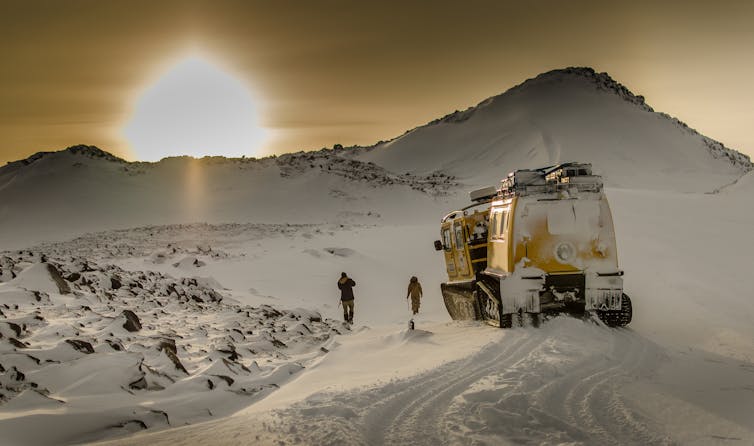
We will have to wait to see what parts of this announcement really turn into. Will surveillance drones be regularly moving through Antarctic skies and seas? What exactly are “mobile stations” and what they will do? Much is unclear.
The funding also continues a go-it-alone approach, without mention of science diplomacy or major international research projects. Recent government documents suggest Australia’s international Antarctic collaborations and scientific publications are trending downwards.
Sadly, Australian-Chinese scientific cooperation, including in the Southern Ocean, is being axed because of “national security concerns”.
Strategic tensions with Russia and China are obviously hardening globally and Antarctica won’t be immune from them.
The question is: will Antarctica be a central arena of competition, or can it remain peripheral, as it has during previous moments of geopolitical heat?![]()
Alessandro Antonello, Senior Research Fellow in History, Flinders University
This article is republished from The Conversation under a Creative Commons license. Read the original article.
Each Antarctic tourist effectively melts 83 tonnes of snow – new research
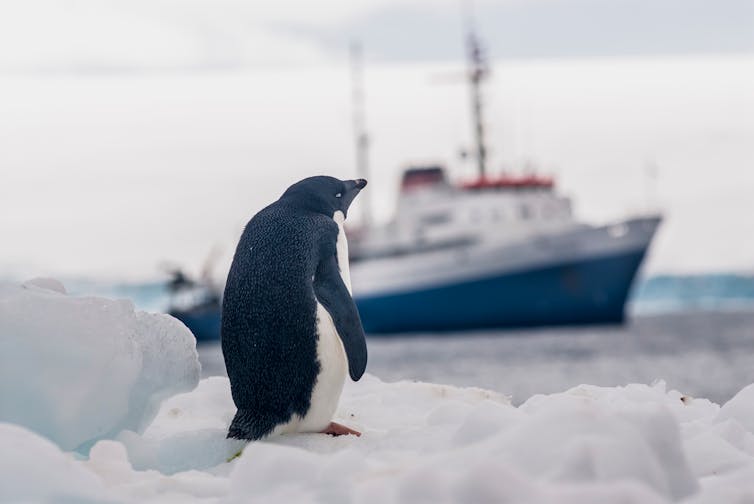
Every summer, as the sea ice surrounding Antarctica retreats, tens of thousands of tourists and scientists flock to the landmass by boat and plane. The remote continent is becoming increasingly accessible – during the 2019-20 season, the number of sightseeing visitors reached 74,000, with the vast majority travelling by ship. Scientific activities on the continent are also significant, with more than 70 research stations collectively housing thousands of researchers.
This activity, which is projected to increase in future, leaves a physical footprint with lasting consequences. In seeking to study or marvel at one of the last (nearly) undisturbed places on earth, humans are having a growing impact that can be measured and quantified.
Under the Antarctic Treaty, tourist and scientific operators are required to remove waste from the continent. Trash and human waste are flown or shipped off the continent for disposal at warmer latitudes. But some forms of waste are not so easily squirrelled off the continent. All activity in Antarctica – be it powered drills for scientific ice coring or vehicles for transport – burns fuel. As we burn fuel to keep warm, or to move around, our activities release microscopic particles of “black carbon” (smoke and soot).
Elsewhere in the world, black carbon is released in enormous quantities by forest fires and human activity. It travels great distances – the soot from the Australian bushfires in 2019-20 travelled around the world. Yet in Antarctica, which is isolated from the rest of the world by a strong “barrier” of circumpolar winds, the sources of black carbon are typically more local.
New research in the journal Nature Communications has extensively quantified the levels of black carbon in the snow near human settlements. Scientists first collected samples from 28 locations across a 2,000km stretch of the most-travelled section of Antarctica, stretching from the Antarctic Peninsula to the interior of the West Antarctic ice sheet.

By analysing the quantity and type of light-absorbing particles in snow samples, the researchers document how soot emitted by humans is affecting the properties of Antarctic snow near high-traffic areas.
Samples were passed through filters and analysed for their optical properties to identify the quantity and type of particulates. Many types of impurities that absorb light exist in Antarctic snow, though in minuscule quantities – the background level of black carbon in Antarctic snow is around 1 nanogram (one billionth of a gram) per gram of snow.
To differentiate between dust and black carbon, the researchers used the “angstrom exponent”. Put simply, smaller particles will absorb a greater band of light than larger ones – so the type of particles in the snow samples could be inferred from how the filtered particles interacted with light in the laboratory.
All samples from near human settlements showed black carbon levels greatly above the typical Antarctic background levels, a clear sign of human emissions. Elevated levels of black carbon will influence how snow absorbs light, a property known as “albedo”. Snow with a lower albedo will melt faster. As a result, the black carbon content in the collected snow samples could be used to infer whether snow melt rates might have increased due to human activity.
Scientists Emit Even More Per Capita Than Tourists
The results are sobering. In affected areas near human settlements on the Antarctic Peninsula, human-produced black carbon may be causing surface snow to melt by up to 23mm every summer. When examining tourist activities specifically, the authors calculate that each visitor between 2016 and 2020 was effectively melting around 83 tonnes of snow, due largely to emissions from cruise ships.
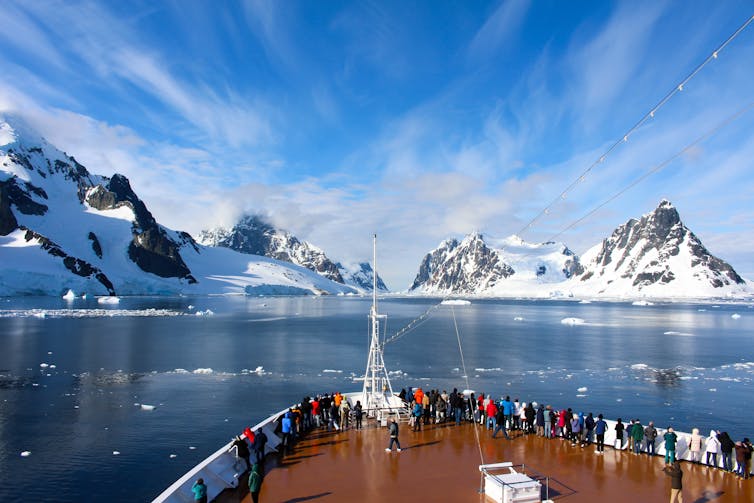
Scientific activities are not exempt – in fact, scientific research stations contribute to an order of magnitude higher per capita snow melt rate through the operation of fuel-intensive equipment and vehicles, sometimes year-round.
This research confirms similar studies elsewhere around the role of black carbon emissions in accelerating ice and snow melt. For instance, fires in the Amazon rainforest were found to have increased the melting rate of glaciers in the Andes. In Antarctica, the documentation of black carbon near settlements echoes other research on microscopic pollution, such as microplastics being found in sea ice and penguins. These findings show that human impacts may be more pervasive and insidious than they appear from a distance.
As human activity in Antarctica increases, so will the accompanying effects. Research on these real and potential harms provides vital information on how they might be best mitigated or avoided altogether. To minimise harm to wildlife and the environment, we need to ensure both research and tourism are carefully managed.![]()
Matthew Harris, PhD Researcher, Climate Science, Keele University
This article is republished from The Conversation under a Creative Commons license. Read the original article.
Avalon Golf Course Bushcare Needs You


Pittwater Reserves: Histories + Notes + Others
A History Of The Campaign For Preservation Of The Warriewood Escarpment by David Palmer OAM and Angus Gordon OAM
Angophora Reserve - Angophora Reserve Flowers
Annie Wyatt Reserve - A Pictorial
Avalon's Village Green: Avalon Park Becomes Dunbar Park - Some History + Toongari Reserve and Catalpa Reserve
Bairne Walking Track Ku-Ring-Gai Chase NP by Kevin Murray
Bangalley Headland Bangalley Mid Winter
Banksias of Pittwater
Barrenjoey Boathouse In Governor Phillip Park Part Of Our Community For 75 Years: Photos From The Collection Of Russell Walton, Son Of Victor Walton
Barrenjoey Headland: Spring flowers
Barrenjoey Headland after fire
Bayview Baths
Bayview Wetlands
Beeby Park
Bilgola Beach
Botham's Beach
Bungan Beach Bush Care
Careel Bay Saltmarsh plants
Careel Bay Birds
Careel Bay Clean Up day
Careel Bay Playing Fields History and Current
Careel Creek
Careel Creek - If you rebuild it they will come
Centre trail in Ku-ring-gai Chase National Park
Chiltern Track- Ingleside by Marita Macrae
Clareville Beach
Clareville/Long Beach Reserve + some History
Coastal Stability Series: Cabbage Tree Bay To Barrenjoey To Observation Point by John Illingsworth, Pittwater Pathways, and Dr. Peter Mitchell OAM
Cowan Track by Kevin Murray
Curl Curl To Freshwater Walk: October 2021 by Kevin Murray and Joe Mills
Currawong and Palm Beach Views - Winter 2018
Currawong-Mackerel-The Basin A Stroll In Early November 2021 - photos by Selena Griffith
Currawong State Park Currawong Beach + Currawong Creek
Deep Creek To Warriewood Walk photos by Joe Mills
Drone Gives A New View On Coastal Stability; Bungan: Bungan Headland To Newport Beach + Bilgola: North Newport Beach To Avalon + Bangalley: Avalon Headland To Palm Beach
Dunbar Park - Some History + Toongari Reserve and Catalpa Reserve
Dundundra Falls Reserve: August 2020 photos by Selena Griffith - Listed in 1935
Elsie Track, Scotland Island
Elvina Track in Late Winter 2019 by Penny Gleen
Elvina Bay Walking Track: Spring 2020 photos by Joe Mills
Elvina Bay-Lovett Bay Loop Spring 2020 by Kevin Murray and Joe Mills
Fern Creek - Ingleside Escarpment To Warriewood Walk + Some History photos by Joe Mills
Ingleside
Ingleside Wildflowers August 2013
Irrawong - Ingleside Escarpment Trail Walk Spring 2020 photos by Joe Mills
Irrawong - Mullet Creek Restoration
Katandra Bushland Sanctuary - Ingleside
Lucinda Park, Palm Beach: Some History + 2022 Pictures
McCarrs Creek
McCarr's Creek to Church Point to Bayview Waterfront Path
McKay Reserve
Mona Vale Beach - A Stroll Along, Spring 2021 by Kevin Murray
Mona Vale Headland, Basin and Beach Restoration
Mount Murray Anderson Walking Track by Kevin Murray and Joe Mills
Mullet Creek
Narrabeen Creek
Narrabeen Lagoon Catchment: Past Notes Present Photos by Margaret Woods
Narrabeen Lagoon State Park
Narrabeen Lagoon State Park Expansion
Narrabeen Rockshelf Aquatic Reserve
Nerang Track, Terrey Hills by Bea Pierce
Newport Bushlink - the Crown of the Hill Linked Reserves
Newport Community Garden - Woolcott Reserve
Newport to Bilgola Bushlink 'From The Crown To The Sea' Paths: Founded In 1956 - A Tip and Quarry Becomes Green Space For People and Wildlife
Pittwater spring: waterbirds return to Wetlands
Pittwater's Lone Rangers - 120 Years of Ku-Ring-Gai Chase and the Men of Flowers Inspired by Eccleston Du Faur
Pittwater's Parallel Estuary - The Cowan 'Creek
Riddle Reserve, Bayview
Salvation Loop Trail, Ku-Ring-Gai Chase National Park- Spring 2020 - by Selena Griffith
Stapleton Reserve
Stapleton Park Reserve In Spring 2020: An Urban Ark Of Plants Found Nowhere Else
The Chiltern Track
The Resolute Beach Loop Track At West Head In Ku-Ring-Gai Chase National Park by Kevin Murray
Towlers Bay Walking Track by Joe Mills
Trafalgar Square, Newport: A 'Commons' Park Dedicated By Private Landholders - The Green Heart Of This Community
Turimetta Beach Reserve by Joe Mills, Bea Pierce and Lesley
Turimetta Beach Reserve: Old & New Images (by Kevin Murray) + Some History
Turimetta Headland
Warriewood Wetlands and Irrawong Reserve
Whale Beach Ocean Reserve: 'The Strand' - Some History On Another Great Protected Pittwater Reserve
Winji Jimmi - Water Maze

New Shorebirds WingThing For Youngsters Available To Download
A Shorebirds WingThing educational brochure for kids (A5) helps children learn about shorebirds, their life and journey. The 2021 revised brochure version was published in February 2021 and is available now. You can download a file copy here.
If you would like a free print copy of this brochure, please send a self-addressed envelope with A$1.10 postage (or larger if you would like it unfolded) affixed to: BirdLife Australia, Shorebird WingThing Request, 2-05Shorebird WingThing/60 Leicester St, Carlton VIC 3053.

 Shorebird Identification Booklet
Shorebird Identification Booklet
The Migratory Shorebird Program has just released the third edition of its hugely popular Shorebird Identification Booklet. The team has thoroughly revised and updated this pocket-sized companion for all shorebird counters and interested birders, with lots of useful information on our most common shorebirds, key identification features, sighting distribution maps and short articles on some of BirdLife’s shorebird activities.
The booklet can be downloaded here in PDF file format: http://www.birdlife.org.au/documents/Shorebird_ID_Booklet_V3.pdf
Paper copies can be ordered as well, see http://www.birdlife.org.au/projects/shorebirds-2020/counter-resources for details.
Download BirdLife Australia's children’s education kit to help them learn more about our wading birdlife
Shorebirds are a group of wading birds that can be found feeding on swamps, tidal mudflats, estuaries, beaches and open country. For many people, shorebirds are just those brown birds feeding a long way out on the mud but they are actually a remarkably diverse collection of birds including stilts, sandpipers, snipe, curlews, godwits, plovers and oystercatchers. Each species is superbly adapted to suit its preferred habitat. The Red-necked Stint is as small as a sparrow, with relatively short legs and bill that it pecks food from the surface of the mud with, whereas the Eastern Curlew is over two feet long with a exceptionally long legs and a massively curved beak that it thrusts deep down into the mud to pull out crabs, worms and other creatures hidden below the surface.
Some shorebirds are fairly drab in plumage, especially when they are visiting Australia in their non-breeding season, but when they migrate to their Arctic nesting grounds, they develop a vibrant flush of bright colours to attract a mate. We have 37 types of shorebirds that annually migrate to Australia on some of the most lengthy and arduous journeys in the animal kingdom, but there are also 18 shorebirds that call Australia home all year round.
What all our shorebirds have in common—be they large or small, seasoned traveller or homebody, brightly coloured or in muted tones—is that each species needs adequate safe areas where they can successfully feed and breed.
The National Shorebird Monitoring Program is managed and supported by BirdLife Australia.
This project is supported by Glenelg Hopkins Catchment Management Authority and Hunter Local Land Services through funding from the Australian Government’s National Landcare Program. Funding from Helen Macpherson Smith Trust and Port Phillip Bay Fund is acknowledged.
The National Shorebird Monitoring Program is made possible with the help of over 1,600 volunteers working in coastal and inland habitats all over Australia.
The National Shorebird Monitoring program (started as the Shorebirds 2020 project initiated to re-invigorate monitoring around Australia) is raising awareness of how incredible shorebirds are, and actively engaging the community to participate in gathering information needed to conserve shorebirds.
In the short term, the destruction of tidal ecosystems will need to be stopped, and our program is designed to strengthen the case for protecting these important habitats.
In the long term, there will be a need to mitigate against the likely effects of climate change on a species that travels across the entire range of latitudes where impacts are likely.
The identification and protection of critical areas for shorebirds will need to continue in order to guard against the potential threats associated with habitats in close proximity to nearly half the human population.
Here in Australia, the place where these birds grow up and spend most of their lives, continued monitoring is necessary to inform the best management practice to maintain shorebird populations.
BirdLife Australia believe that we can help secure a brighter future for these remarkable birds by educating stakeholders, gathering information on how and why shorebird populations are changing, and working to grow the community of people who care about shorebirds.
To find out more visit: http://www.birdlife.org.au/projects/shorebirds-2020/shorebirds-2020-program
Aussie Bread Tags Collection Points

With mental health charities doing it tough and rising rates of youth struggling, Community Capital Foundation want to shift the dial through a campaign to increase awareness, identify organisations making a difference and help raise the capital to contribute to their next grants program.
Late last year, self-harm and suicidal ideation were up 31 per cent for children and teenagers compared with 2020, according to the NSW Government's Health report.
In partnership with Connecting the Dots, by award-winning Canadian film director Noemi Weis, Community Capital Foundation will host five film screenings followed by panel discussions with mental health experts, local organisations and youth representatives to discuss how we can collectively improve youth mental health in 2022.
Running across Sydney's North, Community Capital Foundation have partnered with local organisations, including One Eighty, Burdekin, Headspace, Kyds, Streetwork and the Avalon Youth Hub.
Connecting the Dots is the first feature documentary of its kind to offer a raw and intimate look at youth mental health from a global youth perspective. With heart-felt poignant stories of lived experience, the film exclusively showcases young voices from around the world breaking barriers surrounding youth mental health. Through highly cinematic and character driven storytelling, Connecting the Dots is emotional, reflective and hopeful. Our young leaders are speaking up. It's time to listen.
- Online screening and panel discussion - Thursday 3rd March, 12 pm - FREE
- United Cinemas Avalon - Wednesday 9th March, 7 pm
- Glen Street Theatre - Wednesday 16th March, 7 pm
- Collaroy United Cinemas - Thursday 7th April, 7 pm
- St Matthew's Church Auditorium - Monday 11th April, 7 pm
Following the screening, a panel with young people, clinicians and youth services representatives will discuss some of the key themes from the film, including the local impact on the community. You will also have a chance to join in and ask questions.
Please note that this film includes young people speaking openly about their mental health and the panel discussion may be discussing sensitive topics relating to mental health. This event is also restricted to ages 16+ (only ages 16 years and above are permitted to attend).
You can book here or via the Eventbrite links above. For the cinema screenings Students will be charged $9.95, Adults $19.95. The Online Session is FREE. More in this week's Profile.
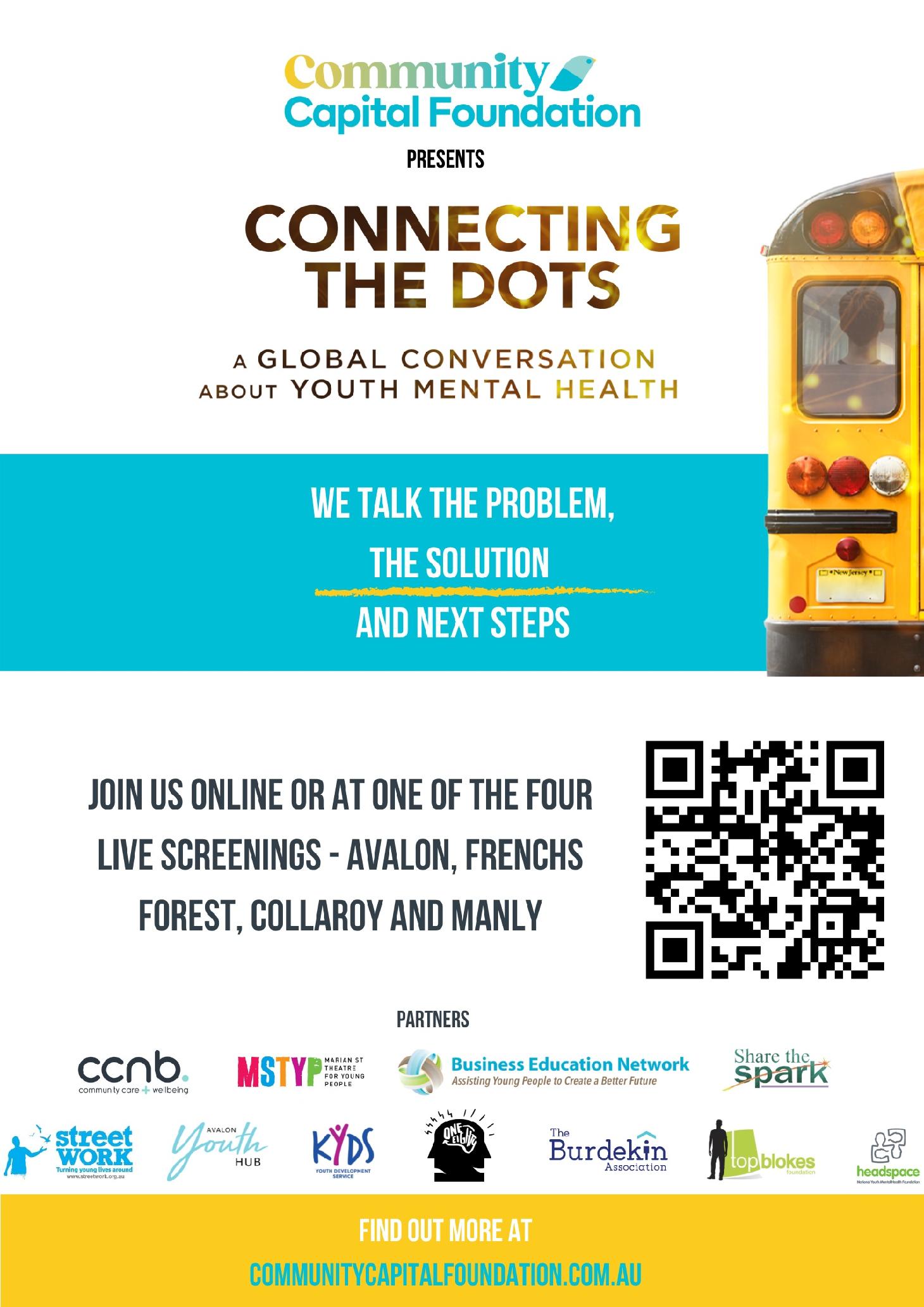
John J. Francis "Simple Ben": 1973
Formed part of the Morning of the Earth soundtrack.
John Francis McGregor is an Australian singer, songwriter, musician, recording engineer, producer, and radio presenter. He was born in 1945 in Murwillumbah and raised on the outskirts of Newcastle.
Francis rose to prominence, in the early 1970s, with the hit single "Play Mumma, Sing Me A Song;" and the song "Simple Ben," which featured on the Morning Of The Earth (Original Film Soundtrack).
His music career started in the early 1960s with Newcastle R&B band "The Sorrows."
In 1970, he took up an invitation by David Gibson to move to Sydney and try out as a sound engineer at Copperfield Sound Studios. This lead to managing the studio. Over four years, in addition to engineering, mixing and producing for other artists and groups, Francis released five singles and four albums.
In 1976, Francis joined the Sydney "youth counterculture" radio station 2JJ (current day triple your yays). For about ten years, he hosted the Friday and Saturday midnight-to-dawn shifts - he was very very good.
Info courtesy Discography.
Two version run below for you:
Word Of The Week: Subversive
Something that is subversive is intended to weaken or destroy a political system or government. The act of subverting : the state of being subverted especially : a systematic attempt to overthrow or undermine a government or political system by persons working secretly from within
obsolete : a cause of overthrow or destruction
Synonyms: seditious, inflammatory, incendiary, underground
Subversion is literally the "turning over" of something. In the 1950s and '60s, many people worried about communist subversion of the Australian government, though they often saw subversive activities where none existed. Nondemocratic governments often claim that anyone who disagrees with them or joins a demonstration is a subversive. Subversion isn't always quite so serious a matter though; when words like weekend, sandwich, job, and camping started being used by the French, for example, some of them began claiming that America was subverting their language.
Bonus Old Track This Week; Five - Keep On Movin' (1999)
Military History Lesson On Offer For Students
Applications Now Open For NSW Youth Advisory Council 2022
Morning Of The Earth: 50th Anniversary Screening At Cremorne
Morning of the Earth 50th Anniversary screening with director Q&A Wed March 9 at the Hayden Orpheum Picture Palace, Cremorne. Beautifully remastered in 4K. One show only! Tickets: http://ow.ly/Rkhc30s774W
Listening to everything: how sound reveals an unseen world
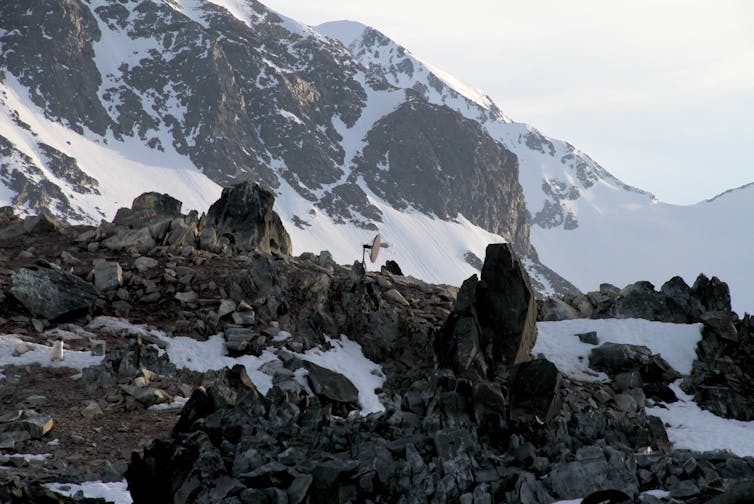
Vision is often regarded as first among the human senses, as our eyes are the way most of us come to know the world. However, vision has its limits.
Even now, as you use your eyes to read this, other senses are in operation that open up a greater appreciation of the world. Perhaps the most powerful of these is listening - audition.
Sound carries cues about the world we might otherwise miss. And with the development of new technologies and the work of dedicated scientists and artists, we can today listen to what was previously unimaginable, from the inner workings of plants to catastrophes in distant galaxies.
In my own work, currently exhibited at the Museum of Brisbane, I have made field recordings of environments and creatures around the world. These works take their place alongside an ever-growing collection of recordings revealing the unheard sounds of our world.
The Limits Of The Ear
Humans can only hear a limited range of sounds: those with frequencies between about 20 hertz (low sounds like thunder) and 20 kilohertz (very high sounds like some species of bats). Other sounds exist outside the scope of our auditory capacities.
“Infrasonic” sounds such as the rumble of earthquakes have frequencies too low for us to perceive, although other animals can detect them. There are “ultrasonic” sounds too, with frequencies above the threshold of human hearing.
Strictly speaking, a sound is a vibration in air. But we can also think of other kinds of vibrations, such as electromagnetic waves, as having the potential to be registered as sounds.
With the right kind of technological translation tools, you can hear the electromagnetic sounds emitted by devices like the one on which you are reading this right now.
Why Should We Listen?
Listening is a different way of knowing the world that expands our understanding. Sound travels around corners and through walls, from places that are out of sight.
Our ears are a gateway to a deeper sensing of the world. Take bird calls, for example.
For most, even those of us living in densely populated urban centres, dawn’s arrival is trumpeted by a chorus of bird calls. These voices, that seemingly splay out in all directions suggest acts of territorial dominance, of the seeking and discovery of food and other fundamental activities of animal species. A variation of the chorus occurs again, as the sun vanishes over the horizon.
These daily occurrences are so commonplace as to not draw themselves to attention. But on closer examination, we are discovering they reveal much about habitat health, seasonality and other environmental markers.
Listening Longer, Listening Deeper, Listening Wider
Today we are listening to more of the world, and beyond, than ever before, with the growth of disciplines such as bio-acoustics, radio telescopy, and more philosophical fields such as sound studies.
The proliferation of technologies such as hydrophones (underwater microphones) and electromagnetic receivers has also increased the reach of our ears.
It’s this combination of intellectual, scientific and artistic curiosity, matched with technological developments and availability that have resulted in the capture of some incredible sound events that exist well beyond the visual plane.
Just a quarter of a century ago it seemed like science fiction that we might be able to capture the sound of two black holes colliding in space – but scientists did it in 2015.
These discoveries and others like them have fostered new research programs that aim to undertake the deepest and most concentrated galactic listening to date.
As Above, So Below
We have made many discoveries closer to home, too.
We have known for a long time that the underwater world is rich in sounds, but it has been underrepresented in dedicated research. This trend is changing, with numerous studies highlighting the rich acoustic diversity of rivers, oceans and reefs.
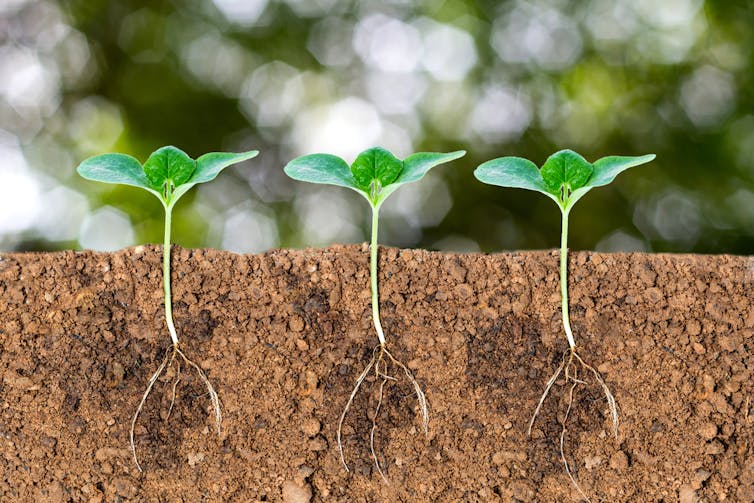
On land, the Australian researcher Monica Gagliano has explored plant audition. She demonstrated how plants can use sound to find water – so next time your plumbing is blocked by a plant’s roots, keep in mind they have been listening to the water flowing through the pipes.
Equally profound are the studies of bioelectrical sounds emitted by plants carried out by artists such as the Irish “sound ecologist” Michael Prime. For several decades, Prime has catalogued various bioelectric emissions from plants. At times they resemble unsettled but rhythmic avant-garde music.
Field Recording
This curiosity for listening into places and those that inhabit them, has also spawned a zone of creative sound practice called field recording. A field recordist is a listener who is primarily focused on capturing the sonic aspects of environments that captivate them.
Once a marginal part of the sound arts canon, field recording has come to be regarded as a critical field of creative engagement. This year artists such as Philip Samartzis have been memorialised in a series of Australian Antarctic postage stamps.
Even if you don’t want to make your own field recordings, you might be interested in listening to the sound walks of Canadian artist Hildegard Westerkamp, or experiencing the situational listening of Japanese artist Akio Suzuki’s Oto Date project.
These works, like my own Site Listening at the Museum Of Brisbane, recognise that the more we listen into the world around us, the more we realise we are yet to hear its true resonances.![]()
Lawrence English, Adjunct Research Fellow, Griffith University
This article is republished from The Conversation under a Creative Commons license. Read the original article.
How to care for your sore hands and wrists when your life is online

We are back to pounding keyboards and swiping phones for another year. But with so much of today’s learning, working and socialising happening via devices, hand and wrist injuries are both common and hard to recover from.
Cumulative trauma to the upper limb from prolonged computer use is a significant problem. Technological advances – online meetings anyone? – and the reduced need to leave our desks for inefficient tasks such as photocopying, sending and receiving mail, and chatting with work colleagues (if now working from home) are causing people to remain in static postures for longer periods.
Musculoskeletal disorders of the upper limb are a common phenomenon and are the single largest category of work-related illness, with some studies reporting they make up to 20–60% of cases. Musculoskeletal disorders are responsible for more work-related absenteeism than any other type of disease.
Further, evidence suggests high levels of smartphone use without regular breaks can result in pain and discomfort in the upper limb. High levels of device use can result in neck, shoulder, wrist and hand problems.
But anyone who has suffered from hand or wrist pain will tell you how hard it is to rest and treat injuries when so much of everyday life – from domestic chores to technology use – is done manually. So what to do?
What Causes It
The risk of these injuries from technology use is due to the repetitive motions of the thumb in often awkward, static (or still) postures of the wrist and hand. The main other factor in developing symptoms includes remaining in awkward static postures for extended periods of time.
Common upper limb disorders resulting from high levels of keyboard, tablet and smartphone use are nerve compression disorders (carpal tunnel syndrome) and tendon inflammation (tenosynovitis, lateral epicondylalgia or “tennis elbow”). Symptoms from these conditions include numbness and tingling in your hand and forearm, weakness in gripping objects in your hand, or local tenderness at the elbow, wrist and/or hand.
When structures of the hand are repetitively stressed for extended periods, the body doesn’t have a chance to rest and heal. What starts out as a minor irritation can soon exacerbate into a significant problem for everyday living.
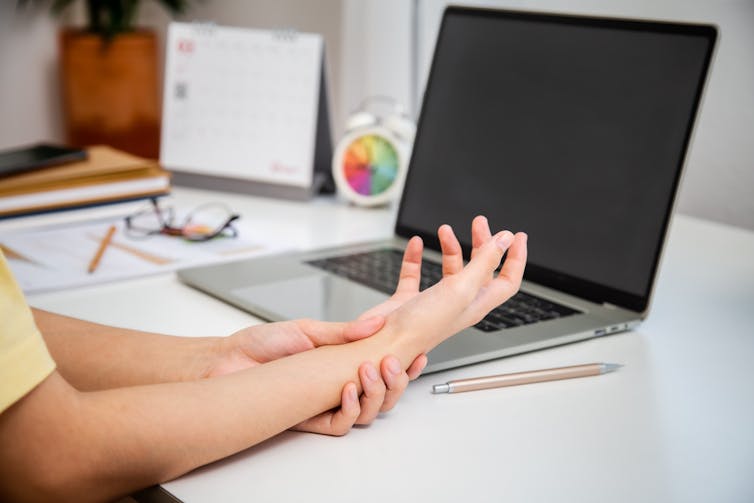
How To Prevent It
The single best piece of advice I can provide is to ensure you have adequate breaks away from your smartphone, tablet or computer. Listen to your body, and ensure you change postures or stop the task if you begin to feel some pain or discomfort.
Microbreaks – as short as 30–60 seconds – can be effective, especially in jobs that require an extended period of sitting in front of a computer hammering away at a keyboard. Remember, it is the repetitive movements in static postures that you are trying to avoid. These microbreaks are especially important for prolonged smartphone or tablet use.
These breaks should occur every 20 minutes and involve changing the posture through some dynamic movements. This could include standing (if you were sitting), moving your joints through their full range of motion, or even better, getting away from your workstation and moving around.
Build these breaks into your work routine through calendar invites or other software programs that ping you an alert at the desired break time.
Alternatively, schedule tasks close together that requires different postures. For example, you could schedule important phone calls or face meetings between more extended periods of keyboard work.
Good postures and workstation ergonomics can make a real difference in reducing and managing these aches and pains. Ensure your computer is well set up on a desk set at the appropriate height.
Your wrists should be slightly extended backwards (towards the ceiling) when resting on the keyboard. All other equipment on your desk that you commonly use should be within easy reach.
You should have a relaxed posture through your shoulders, neck and arms when sitting for extended periods. Specialised ergonomic equipment such as keyboards and mice may be beneficial, as may voice-to-text software.
When The Damage Is Done
If the pain or discomfort continues to worsen or impacts your engagement in your daily activities, it is important to seek professional health advice before the condition significantly progresses.
An accredited hand therapist is an excellent place to start. These health professionals are registered occupational therapists or physiotherapists who have extensive experience and knowledge of the complex anatomy of the hand and wrist.
They will be able to provide individual advice and treatment to help you manage your condition. Treatments could include tailored ergonomic advice, the prescription of specific exercises, hot or ice packs, and custom orthotic devices (splints). In more serious cases, you may be referred to a hand surgeon, who may provide medication, cortisone injections or surgery to address the underlying causes of symptoms.
Given the rapid changes we’ve seen in our how humans interact with their world, research is helping us better understand how to manage the adverse effects of our exploding technology use. While we know a little, there is still much work to be done.
![]()
Dave Parsons, Lecturer, Curtin University
This article is republished from The Conversation under a Creative Commons license. Read the original article.
Altruism in birds? Magpies have outwitted scientists by helping each other remove tracking devices
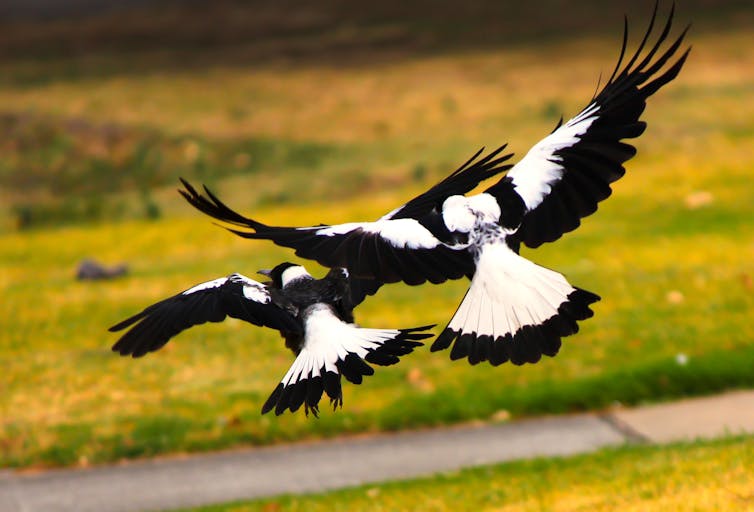
When we attached tiny, backpack-like tracking devices to five Australian magpies for a pilot study, we didn’t expect to discover an entirely new social behaviour rarely seen in birds.
Our goal was to learn more about the movement and social dynamics of these highly intelligent birds, and to test these new, durable and reusable devices. Instead, the birds outsmarted us.
As our new research paper explains, the magpies began showing evidence of cooperative “rescue” behaviour to help each other remove the tracker.
While we’re familiar with magpies being intelligent and social creatures, this was the first instance we knew of that showed this type of seemingly altruistic behaviour: helping another member of the group without getting an immediate, tangible reward.
Testing Exciting New Devices
As academic scientists, we’re accustomed to experiments going awry in one way or another. Expired substances, failing equipment, contaminated samples, an unplanned power outage – these can all set back months (or even years) of carefully planned research.
For those of us who study animals, and especially behaviour, unpredictability is part of the job description. This is the reason we often require pilot studies.
Our pilot study was one of the first of its kind – most trackers are too big to fit on medium to small birds, and those that do tend to have very limited capacity for data storage or battery life. They also tend to be single-use only.
A novel aspect of our research was the design of the harness that held the tracker. We devised a method that didn’t require birds to be caught again to download precious data or reuse the small devices.
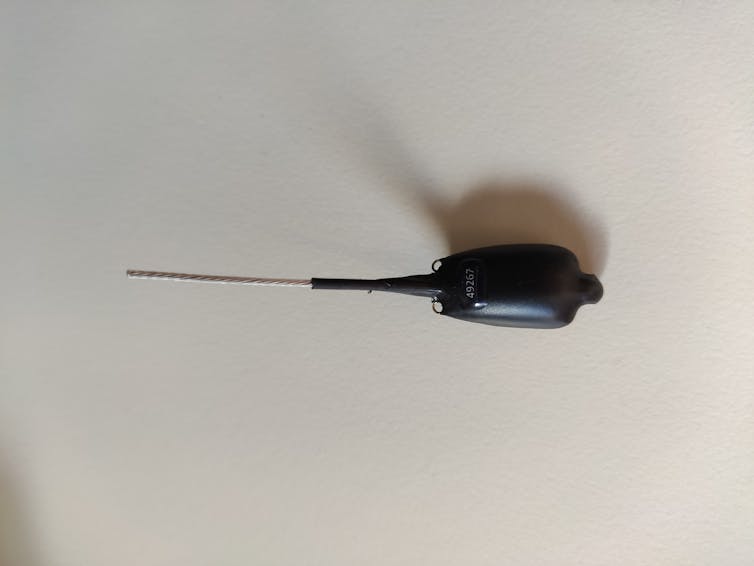
We trained a group of local magpies to come to an outdoor, ground feeding “station” that could either wirelessly charge the battery of the tracker, download data, or release the tracker and harness by using a magnet.
The harness was tough, with only one weak point where the magnet could function. To remove the harness, one needed that magnet, or some really good scissors. We were excited by the design, as it opened up many possibilities for efficiency and enabled a lot of data to be collected.
We wanted to see if the new design would work as planned, and discover what kind of data we could gather. How far did magpies go? Did they have patterns or schedules throughout the day in terms of movement, and socialising? How did age, sex or dominance rank affect their activities?
All this could be uncovered using the tiny trackers – weighing less than one gram – we successfully fitted five of the magpies with. All we had to do was wait, and watch, and then lure the birds back to the station to gather the valuable data.

It Was Not To Be
Many animals that live in societies cooperate with one another to ensure the health, safety and survival of the group. In fact, cognitive ability and social cooperation has been found to correlate. Animals living in larger groups tend to have an increased capacity for problem solving, such as hyenas, spotted wrasse, and house sparrows.
Australian magpies are no exception. As a generalist species that excels in problem solving, it has adapted well to the extreme changes to their habitat from humans.
Australian magpies generally live in social groups of between two and 12 individuals, cooperatively occupying and defending their territory through song choruses and aggressive behaviours (such as swooping). These birds also breed cooperatively, with older siblings helping to raise young.
During our pilot study, we found out how quickly magpies team up to solve a group problem. Within ten minutes of fitting the final tracker, we witnessed an adult female without a tracker working with her bill to try and remove the harness off of a younger bird.
Within hours, most of the other trackers had been removed. By day 3, even the dominant male of the group had its tracker successfully dismantled.
We don’t know if it was the same individual helping each other or if they shared duties, but we had never read about any other bird cooperating in this way to remove tracking devices.
The birds needed to problem solve, possibly testing at pulling and snipping at different sections of the harness with their bill. They also needed to willingly help other individuals, and accept help.
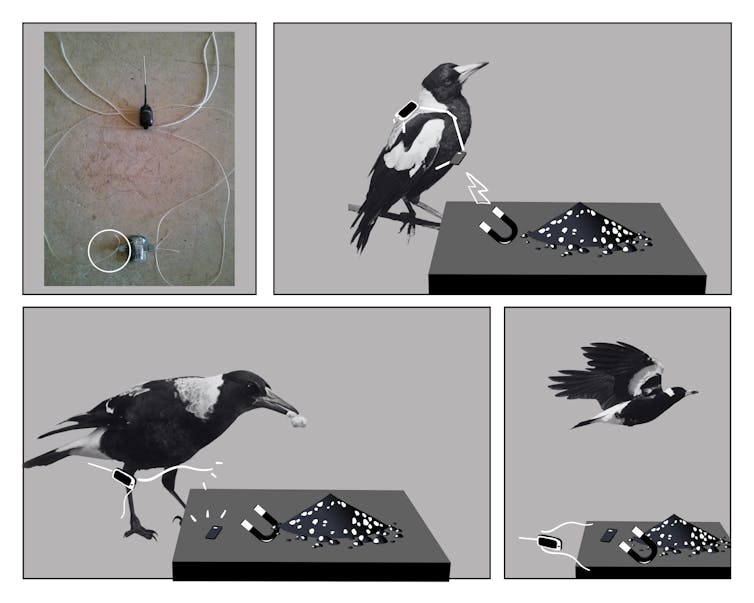
The only other similar example of this type of behaviour we could find in the literature was that of Seychelles warblers helping release others in their social group from sticky Pisonia seed clusters. This is a very rare behaviour termed “rescuing”.
Saving Magpies
So far, most bird species that have been tracked haven’t necessarily been very social or considered to be cognitive problem solvers, such as waterfowl and raptors. We never considered the magpies may perceive the tracker as some kind of parasite that requires removal.
Tracking magpies is crucial for conservation efforts, as these birds are vulnerable to the increasing frequency and intensity of heatwaves under climate change.
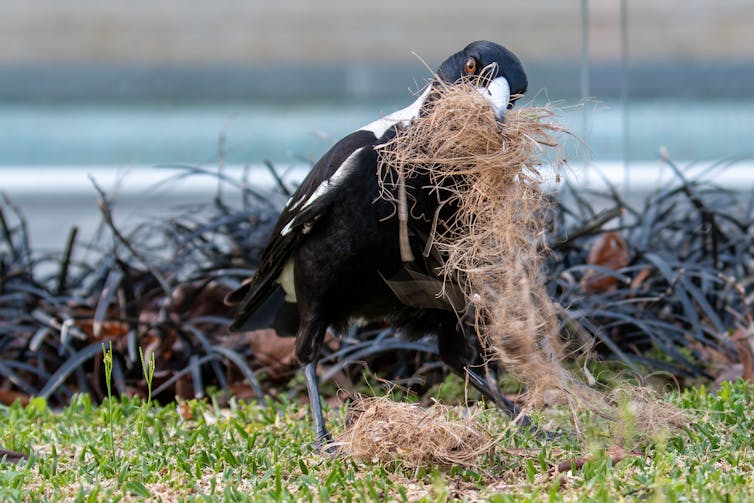
In a study published this week, Perth researchers showed the survival rate of magpie chicks in heatwaves can be as low as 10%.
Importantly, they also found that higher temperatures resulted in lower cognitive performance for tasks such as foraging. This might mean cooperative behaviours become even more important in a continuously warming climate.
Just like magpies, we scientists are always learning to problem solve. Now we need to go back to the drawing board to find ways of collecting more vital behavioural data to help magpies survive in a changing world. ![]()
Dominique Potvin, Senior Lecturer in Animal Ecology, University of the Sunshine Coast
This article is republished from The Conversation under a Creative Commons license. Read the original article.
Remaking history: in hand-making 400-year-old corset designs, I was able to really understand how they impacted women

In this new series, Remaking History, academics take a look at the ways they are recreating historical practices, and how this impacts their research today.
Although I have been sewing as a hobby for many years, making and wearing historical clothing was not something I imagined myself doing when I first began researching the history of corsets and hooped skirts.
But many years on – and many corsets later – the experimental process of reconstructing 400-year-old garments has taught me many things about historical making practices, women’s experiences and about not believing everything you read.
In my research, I look at women’s clothing from the 16th and 17th centuries. There are very few sources from this time where women themselves describe what it was like to wear “bodies”, “stays” and “farthingales” – the names given to corsets and hooped skirts at the time.
The philosopher Michel de Montaigne portrayed these garments as torture devices women used to become slender, reflecting their inherent vanity.
Other men blamed women for deforming their own bodies and that of their children, for causing infertility or miscarriage, and even for hiding sexually transmitted infections.

Yet, in the face of these criticisms, corsets and hooped skirts went from being elite garments worn by a few aristocrats in royal courts to common among many different classes of women in Europe. During the 17th and 18th centuries, women led the way in purchasing these garments and in dictating to their tailors what they wanted and why.
Despite the demonstrated popularity of this clothing among women, many myths persist. Without physical or historical proof to interrogate whether these garments were as restrictive or painful as they were made out to be, such myths are hard to overcome.
This is where reconstruction comes in.
Reconstructing Early Corsets
My work follows other approaches that have reconstructed surviving historical clothing.
I focus on making my corsets to the patterns and dimensions of surviving garments.

All my corsets (except one) were completely hand sewn using techniques and stitches visible in the originals.
For many of the reconstructions I kept an online diary of the making process, noting both my successes and failures as I attempted to replicate the work of master craftsmen with many more years of experience than myself.
Reconstructions of historical garments can never be exact replicas: it is always an act of interpretation. Informed compromises between modern and historical materials are necessary.
All my reconstructions are made from natural fibre fabrics that were available in the past such as silk and linen, but differences in modern fabric manufacturing make it impossible to precisely replicate historical fabrics.
Historical corsets often got their shape and stiffness from whale baleen. Commercial whaling was banned in 1986 and so I used modern synthetics specifically designed to mimic the properties of baleen.
Despite these challenges, making historical corsets taught me to think like a tailor, to understand why specific materials or techniques were used and to assess the artisanal making knowledge that we have lost.
Lessons In The Wearing
Once the corsets were made, it was time for them to be worn. I both wore them myself, and observed other women in them.

I instructed models to sit down, bend over and reach up to test the ways these garments limited or impeded movement. I found corsets spanned a wide spectrum of comfort and restrictiveness depending on the design of the garment: the cut, the length and how much it was boned.
Early modern corsets could be uncomfortable if not fitted to individual measurements or made correctly. This shows the importance of well-tailored garment in times before modern off-the-rack standardised clothing made from stretch fabrics.
Most 17th-century garments are front lacing, giving women control over how they wore the garment at different times of the day. A woman could wear it loose or tight laced. She may also have worn it every day or only for formal occasions.

My experiments also showed the slenderising effects of these early corsets observed by Montaigne were largely due to the optical illusion of their cylindrical shape. My corsets didn’t reduce body measurements by much. I found the most restrictive feature of 17th century corsets to be their off-shoulder straps that limit arm movement, but this is not something unique to corsets.
One of my reconstructions was a maternity corset from the late 17th century. Placing it on a model with a simulated pregnancy bump showed how the design accommodated pregnancy: it supported the breasts and back, while not restricting the abdomen. This is far from the picture painted by sensationalist male moralists that warned of the dangers to pregnancy.

We may never know precisely how a 16th or 17th-century woman felt when she wore a corset, nor exactly recapture her bodily experiences. However, reconstructions can help us to assess how much written sources do or do not reflect the lived experiences of historical women – and go one step further in showing how many myths about early corsets written by men are exaggerations.![]()
Sarah Bendall, Research Fellow, Gender and Women's History Research Centre, Institute for Humanities and Social Sciences, Australian Catholic University
This article is republished from The Conversation under a Creative Commons license. Read the original article.
How sport can help young people to become better citizens

Most Australians have followed health advice to wear face masks and have COVID-19 vaccinations. Actions like these that benefit others are known in psychology as prosocial behaviours. In a COVID context, prosocial behaviours reduce the spread of the virus and keep health-care institutions functioning.
The likelihood of prosocial behaviour by an individual is affected by their values. In particular, their social and civic values influence their concern for the welfare of others.
We recently undertook research on possible connections between sport and promoting thinking about social issues and the common good. Working with health and physical education student teachers, we explored shared learning opportunities between two areas of the Australian Curriculum, Health and Physical Education, and Civics and Citizenship Education. Fair play, ethical debates and dilemmas, community involvement, identity and inclusivity are areas where sport and civic values intersect.
Civic values help keep people happy and secure in a functional society. In democracies such as Australia, these values include freedom, equality, responsibility, accountability, respect, tolerance and inclusion.
When young people learn these values it helps create a cohesive society. This has become increasingly important in light of COVID misinformation and conspiracy theories, and the various threats to democracy around the world in recent years.
What Does Sport Have To Do With Civic Values?
Adolescence is an important time for developing civic values. Personal life experiences, relationships and social contexts all influence this development. These contexts can include home, school and extracurricular activities such as sport.
Sport is a big part of the lives of many young people. It provides opportunities for:
- participation
- breaking down cultural barriers
- building community identity
- making friends, developing networks and reducing social isolation.
Sport requires us to work with others to achieve team goals. In this way, it can help children to develop attributes such as altruism and empathy.
In one study, for example, young people taking part in organised sport were more accepting of migrants. Those who did not have contact with migrant children through sport had more negative attitudes.
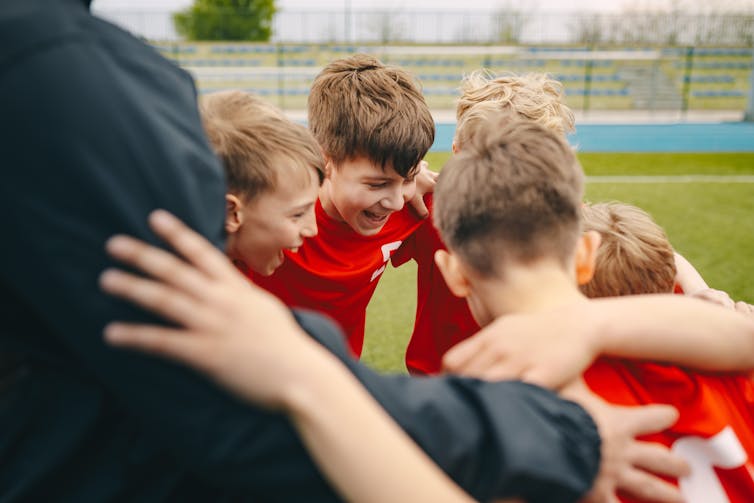
Research has noted parents describing sport as a “school of life”. It teaches their children tolerance, teamwork, a sense of duty, the value of hard work, and socialisation skills.
Sport’s development of character and understanding of values such as fair play and respect can benefit young people in their wider lives.
More broadly, by fostering prosocial behaviour, sport can make significant contributions to the common good.
For example, a 2021 review of 13 international studies investigated the effects of sports programs on crime prevention and re-offending. It found participants in these programs had greatly reduced aggressiveness and antisocial behaviour. Their self-esteem and mental well-being improved significantly. The result was a decrease in criminal behaviour.
The creator of basketball, James Naismith, believed the sport taught players values and moral attributes. He developed basketball not just as an indoor game football players could play through the winter, but as a context for young people to learn teamwork, co-operation, fair play, sportsmanship and self-sacrifice. He believed team sports taught the skills essential for a functioning community.
It’s Not All Rosy
Unfortunately, in elite sports, gamesmanship, greed, cheating and a win-at-any-cost mentality can sometimes be elevated above positive virtues such as courage, co-operation and sportsmanship. In our study, many student teachers referred to news reports with negative messages about cheating, doping and racism.
Yet our data also highlighted sporting contexts as positive catalysts for reflection and pro-social behaviours. Participants noted examples such as:
“equal pay for men and women (e.g. surfing)”
“evolving attitudes towards mental health issues in sport”
“sportspeople taking the knee in support of the Black Lives Matters movement”
“sport as a breath of fresh air in the context of the restrictions of COVID-19”
“great sporting moments have arisen with the inclusion of disabled or disadvantaged people”.
Sport has recently been a victim of the COVID-19 pandemic. Events have been cancelled and games played in empty stadiums. But sport has also been a shining light for people struggling in lockdown.
This was particularly true of the 2021 Tokyo Olympics. The International Olympic Committee (IOC) described the event as a beacon of hope after so much of normal life was brought to a standstill. Other commentators have similarly said Tokyo “made sport a shining light in the gloom” and described the Games as “such a welcomed distraction, really highlighted how much sport can bring a smile to people’s faces”.
So, How Do We Maximise The Benefits?
Teaching students about civic values and sport as part of the school curriculum isn’t the only way to foster prosocial behaviour. We can reap its broader benefits for a healthier society by encouraging young people to play sport at school and in the community. Ways to do this include:
governments, schools and community groups promoting physical activity benefits such as better health, increased energy and improved mood and sleep
increasing opportunities to be physically active in school programs, including activities they can enjoy for years after school such as bushwalking and cycling
making students more aware of community clubs and facilities by inviting club staff or volunteers to talk to students and run practical sessions
allowing girls to wear sports uniforms that make them more comfortable and confident, such as clothing that’s stretchy, dark-coloured and hides sweat
helping parents to get involved in their children’s physical activity by offering family activities and providing take-home bags of basic play equipment and activity suggestions
removing barriers to participation such as the cost of club fees and equipment and an overemphasis on competition. This can be done by providing vouchers and promoting other reasons people play sport such as personal achievement and satisfaction, and social interaction.

Vaughan Cruickshank, Program Director – Health and Physical Education, Maths/Science, Faculty of Education, University of Tasmania and Casey Peter Mainsbridge, Lecturer in Health and Physical Education, Director of Student Engagement School of Education, University of Tasmania
This article is republished from The Conversation under a Creative Commons license. Read the original article.
Want to learn a language? Try TikTok

Social media are becoming an increasingly integral part of our everyday lives. We’re spending more time on our phones, but this is mostly on unproductive activities, which can take a serious toll on mental and physical well-being.
But what if we could make this time productive? For example, spending time on social media could help you learn a foreign language.
How Do Australians Use Social Media?
In January 2021, almost 80% of Australians were “active users” of social media compared to 58% in 2015. Facebook remains the most popular social media platform. Others such as TikTok and Instagram are gaining a stronger foothold with younger audiences.
At the end of 2021, TikTok even surpassed Google as the world’s most popular web domain. This is not just in terms of social media but based on global internet traffic, which includes platforms hosted by Google such as Gmail and Google Maps. In Australia, TikTok is the fastest-growing social media company and was the second-most-downloaded app after Zoom in 2020.
TikTok’s success is largely due to the interactive and highly engaging nature of the audiovisual content that dominates its platform. Users often spend hours scrolling through their feeds, and popular channels boast millions of followers.
This upwards trend among young users — who visit social media platforms “multiple times a day” — has led Australian school teachers to turn to TikTok to engage with students, particularly during COVID-19 lockdowns.

Social Media As An Educational Platform
The role of social media as an emerging educational platform, particularly for foreign languages, deserves greater attention. In lieu of face-to-face lessons, private language teachers have turned to platforms like TikTok and Instagram to attract and teach students.
Language educators are harnessing the popularity and success of social media by creating content to help their followers improve their language skills. This is primarily done through short, interactive videos. These are designed to teach content in short chunks, an approach called “microlearning”.
Research indicates this is an effective tool for students and teachers alike. It breaks the lessons down so users can absorb it as part of an “everyday scroll”. Content in this form is easier to engage with (from the learner’s perspective) and more likely to be retained.
For example, English students can watch short videos to improve their vocabulary or practise the pronunciation of difficult words — or even mimic simple conversations.
Students studying Mandarin can learn some helpful phrases for going to the hairdresser; French students can practise distinguishing between two similar sounds; and people travelling to Italy can learn how to order their first espresso.
Videos can offer general guidance on language learning or even illustrate — in a highly relatable manner — the obstacles students may encounter when studying Mandarin.
The platforms’ high functionality allows teachers to use visual and audio cues. On platforms like Instagram, they can also create quizzes or save content via “stories” for students to access later.
It’s engaging, accessible and not just limited to language learning. Popular channels feature educational content on topics such as cooking, learning to play piano, or simple “life hacks”.
How Much Can You Learn?
Social media content won’t take you from a complete beginner to a native speaker in a few weeks. But a little bit of exposure each day can have a significant effect.
If you’re a beginner, this will mean finding channels aimed at teaching you the basics. Many channels on TikTok and Instagram cater to a variety of levels, and incorporate grammar, vocabulary, listening and speaking videos to help you learn. However, it’s key to engage with “comprehensible input” — that is, language you can understand but which still challenges you.
More advanced users may find they benefit more from videos dedicated to slang, idioms or improving their vocabulary.
Ultimately, everyone’s language learning journey is different. How you can harness social media in that journey will depend on what your individual goals are. And as more and more language teachers take to social media platforms, the channels and platforms to choose from are numerous.
Is It Worth It?
Just like changing the language on your phone to your target language or increasing the amount of music you listen to and movies you watch, social media offer another tool to allow you to increase your daily exposure to your target language.
But the advantage of social media is easy access. It’s likely something you’re already engaging with daily and potentially even feel “addicted to”.![]()
Aidan Carter, Head Tutor in Political Science; Tutor in Italian studies and Linguistics, The University of Melbourne
This article is republished from The Conversation under a Creative Commons license. Read the original article.
Homage, pilgrimage and protest: why Sydney’s Mardi Gras parade should go back to the streets

In 1985, calls for the Sydney Gay and Lesbian Mardi Gras Parade to be cancelled in response to concerns about HIV/AIDS were successfully countered by the organisers. The parade is now recognised as an important way of creating awareness of safe-sex practices, reducing the social stigma of HIV/AIDS and being a living memorial to those who died from it.
In 2020, like many other major events, the Mardi Gras parade became a victim of another virus: COVID-19. In consultation with public health experts, the parade moved to the Sydney Cricket Ground in 2021 and will again take place there in 2022.
This radical decision is a testament to the resilience and spirit of Mardi Gras that, despite calls for its cancellation at various points within its 43-year history, the show continues.
But at what cost? Taking it away from its homeland on Oxford street, and containing it within the boundaries of the SCG challenges its status as a protest, reducing its ability to disrupt.

A Pilgrimage
Since 1978, the parade has followed roughly the same route on Oxford Street in the heart of Sydney’s “Gaybourhood”. That first parade ended in a brutal riot instigated by police. By following the route of that first night, the parade pays homage to the brave people who created that first parade, now known as the 78ers.
For some, the parade acts as a form of pilgrimage and a place to express and affirm one’s sexual and/or gender orientation. It is a moment in time when a minority is publicly celebrated and when differences are embraced, albeit temporarily.
For others who may not be out, the parade provides a visual representation of what being LGBTIQ+ is. It helps break down barriers that prevent LGBTIQ+ people from living their authentic lives, displaying a community that will embrace them.

The success of the parade has inspired similar ones in other regional communities around Australia .
These public displays challenge mainstream expectations of sexuality and gender, drawing attention to the diversity of LGBTIQ+ communities. Oxford Street provides the parade and its exuberant participants with a connection to what is arguably Australia’s LGBTIQ+ imagined homeland – and the struggles and celebrations of past generations.
The Shift To The Cricket Ground
It is not surprising the shift to the Sydney Cricket Ground in 2021 was not accepted by all LGBTIQ+ people. Several hundred people marched down Oxford Street following an exemption granted by the NSW Minister for Health.
Apart from honouring the 78ers, people marched to protest contemporary issues like the religious freedom discrimination bill and Black deaths in custody. They felt protest could not be effective within the walls of the SCG.
The importance of Oxford Street relates then not only to the origin of the parade but to the fact that it disrupts public space and, by doing so, garners public attention for important issues.
Indeed, a protest is only a protest if it disrupts the everyday routines of public life. The blocked roads and traffic diversions expose the public to the parade, regardless of whether they intend to participate. These disruptions help remind the public of the LGBTQIQ+ communities and their place in Australian society.

The shift to the SCG changes the nature of the parade and its relationship with onlookers. It becomes a ticketed event, and those attending can no longer maintain the anonymity afforded on a crowded street. Ticketing limits access to the event to Mardi Gras members (who each receive two free tickets); those who can afford tickets; and those lucky to get one of a limited number of spots.
Lastly, the SCG, with its fencing and security, is spatially contained within boundaries that prevent the public gaze on the street, potentially consigning the politics of Pride away from the public sphere to within a private space.
The fact that the Mardi Gras Parade has been able to take place each year across its 43-year history, in the face of protests from some religious groups, ill-founded concerns about HIV transmission, horrible weather and now, COVID-19, is a show of defiance and strength.
However, shifting the parade from the street where it emerged, with such strong historical connections to the development of LGBTQI+ Pride does come with some costs.
It remains to be seen what happens in the future with World Pride 2023 set to be hosted in Sydney.
Will the parade come out of the stadium as planned? Will it still call people out of the bars and onto the streets? Or will it morph into an entertainment spectacle, sanitised and contained within the boundaries of the SCG?![]()
Clifford Lewis, Senior lecturer, Charles Sturt University and Kevin Markwell, Adjunct Professor, Southern Cross University
This article is republished from The Conversation under a Creative Commons license. Read the original article.
Singing In The Brain
Fish Generate Movable Pairs Of Vortices To Propel Them Forward Like Body Waves
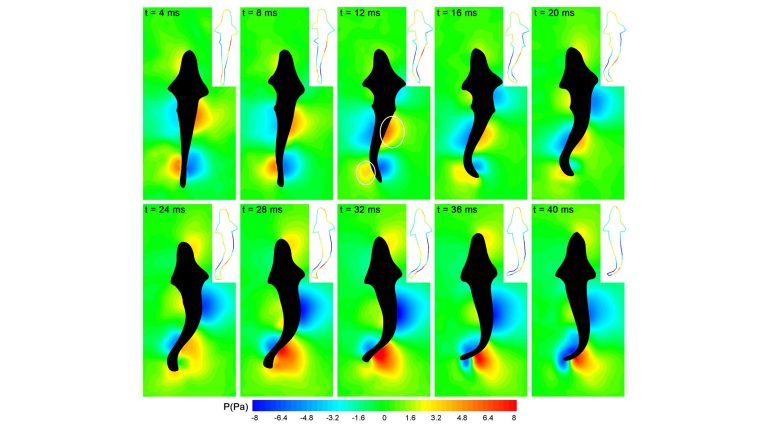
One In Three Young People Say They Felt Happier During Lockdown
Evidence Grows For Vaping's Role In Gum Disease
- Scott C. Thomas, Fangxi Xu, Smruti Pushalkar, Ziyan Lin, Nirali Thakor, Mridula Vardhan, Zia Flaminio, , Alireza Khodadadi-Jamayran, Rebeca Vasconcelos, Adenike Akapo, Erica Queiroz, Maria Bederoff, Malvin N. Janal, Yuqi Guo, Deanna Aguallo, Terry Gordon, Patricia M. Corby, Angela R. Kamer, Xin Li, Deepak Saxena. Electronic Cigarette Use Promotes a Unique Periodontal Microbiome. mBio, Feb. 22, 2022; DOI: 10.1128/mbio.00075-22
- Fangxi Xu, Eman Aboseria, Malvin N. Janal, Smruti Pushalkar, Maria V. Bederoff, Rebeca Vasconcelos, Sakshi Sapru, Bidisha Paul, Erica Queiroz, Shreya Makwana, Julia Solarewicz, Yuqi Guo, Deanna Aguallo, Claudia Gomez, Donna Shelly, Yindalon Aphinyanaphongs, Terry Gordon, Patricia M. Corby, Angela R. Kamer, Xin Li, Deepak Saxena. Comparative Effects of E-Cigarette Aerosol on Periodontium of Periodontitis Patients. Frontiers in Oral Health, 2021; 2 DOI: 10.3389/froh.2021.729144
- Smruti Pushalkar, Bidisha Paul, Qianhao Li, Jian Yang, Rebeca Vasconcelos, Shreya Makwana, Juan Muñoz González, Shivm Shah, Chengzhi Xie, Malvin N. Janal, Erica Queiroz, Maria Bederoff, Joshua Leinwand, Julia Solarewicz, Fangxi Xu, Eman Aboseria, Yuqi Guo, Deanna Aguallo, Claudia Gomez, Angela Kamer, Donna Shelley, Yindalon Aphinyanaphongs, Cheryl Barber, Terry Gordon, Patricia Corby, Xin Li, Deepak Saxena. Electronic Cigarette Aerosol Modulates the Oral Microbiome and Increases Risk of Infection. iScience, 2020; 23 (3): 100884 DOI: 10.1016/j.isci.2020.100884
- Fangxi Xu, Smruti Pushalkar, Ziyan Lin, Scott C. Thomas, Julia Kishanie Persaud, Maria A Sierra, Mridula Vardhan, Rebeca Vasconcelos, Adenike Akapo, Yuqi Guo, Terry Gordon, Patricia M Corby, Angela R. Kamer, Xin Li, Deepak Saxena. Electronic cigarette use enriches periodontal pathogens. Molecular Oral Microbiology, 2022; DOI: 10.1111/omi.12361
Are Pandemic-Related Stressors Impacting Uninfected People's Brain Health?
Sonic Advance: How Sound Waves Could Help Regrow Bones
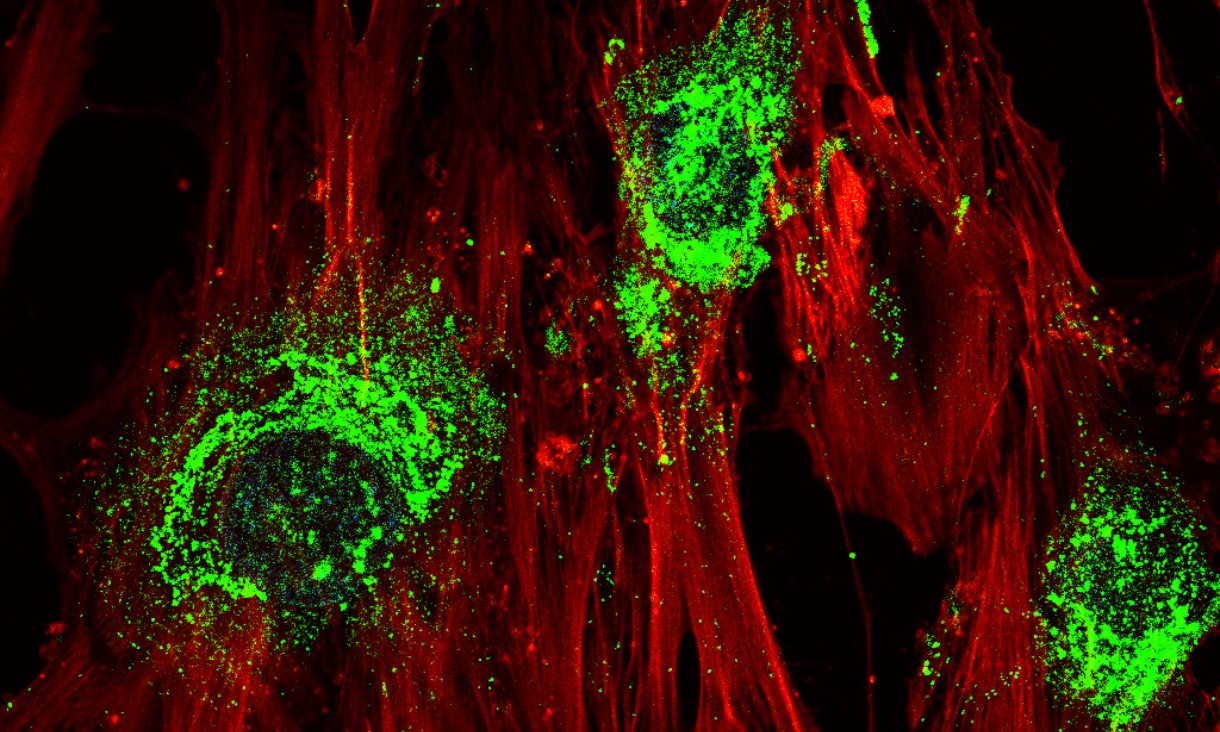
Molecular 'Culprit' Caught Driving Cell Death And Inflammation
- Nitric oxide and the protein that enables its production, caspase-8, have been shown to cause a unique form of cell death that can drive excessive levels of inflammation in the body.
- The team showed that blocking the activity of caspase-8 and nitric oxide in a preclinical SARS-CoV-2 model reduced the severity of inflammation and infection.
- The findings suggest targeting this novel cell death pathway could create new therapeutics for a range of diseases where damaging levels of nitric oxide, cell death and inflammation occur including asthma, inflammatory bowel disease and COVID-19.
Disclaimer: These articles are not intended to provide medical advice, diagnosis or treatment. Views expressed here do not necessarily reflect those of Pittwater Online News or its staff.